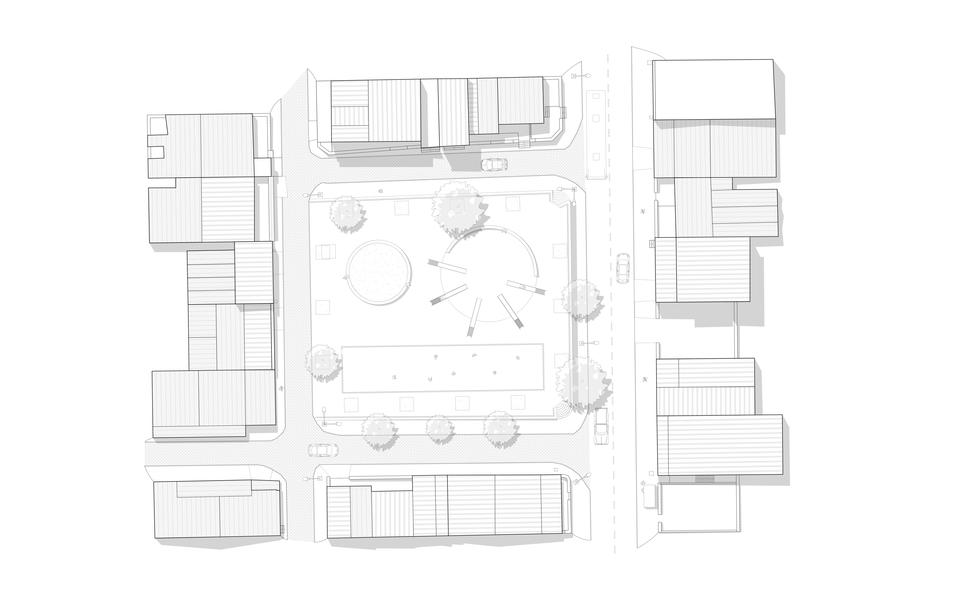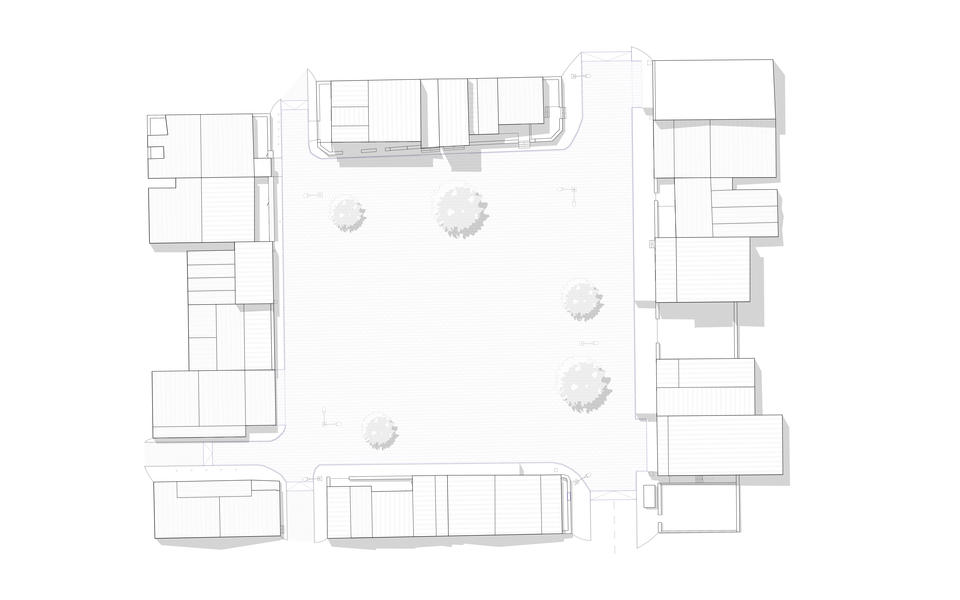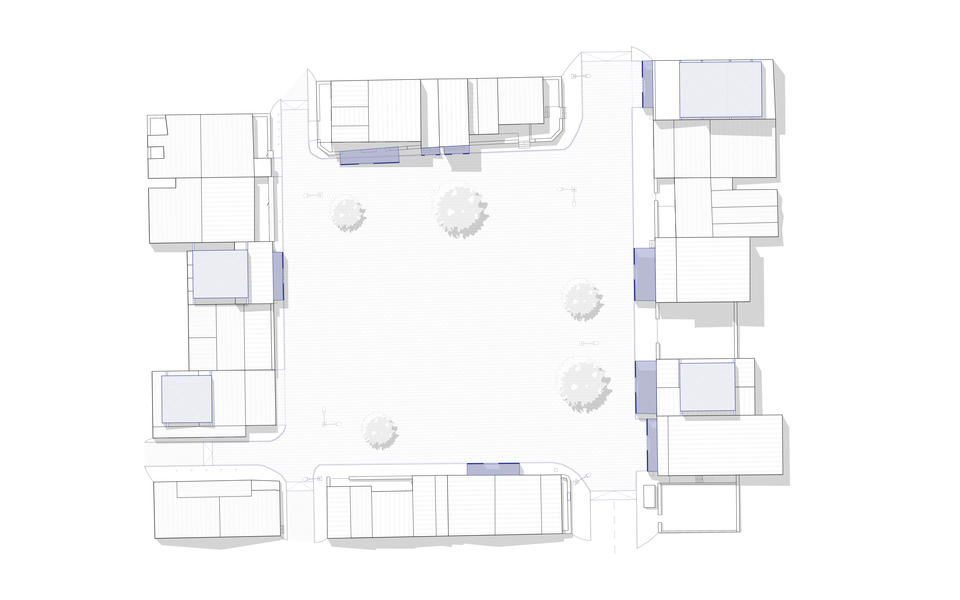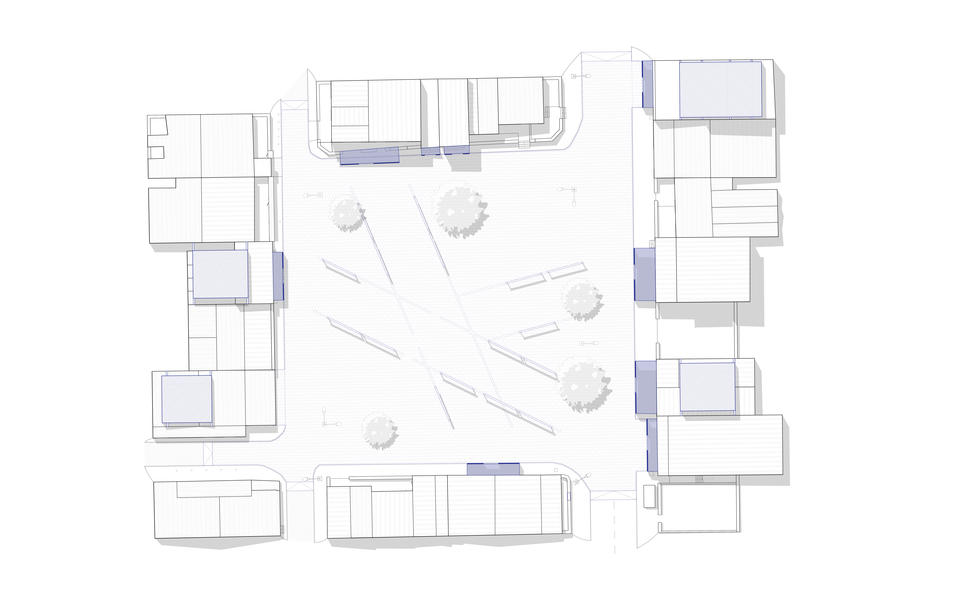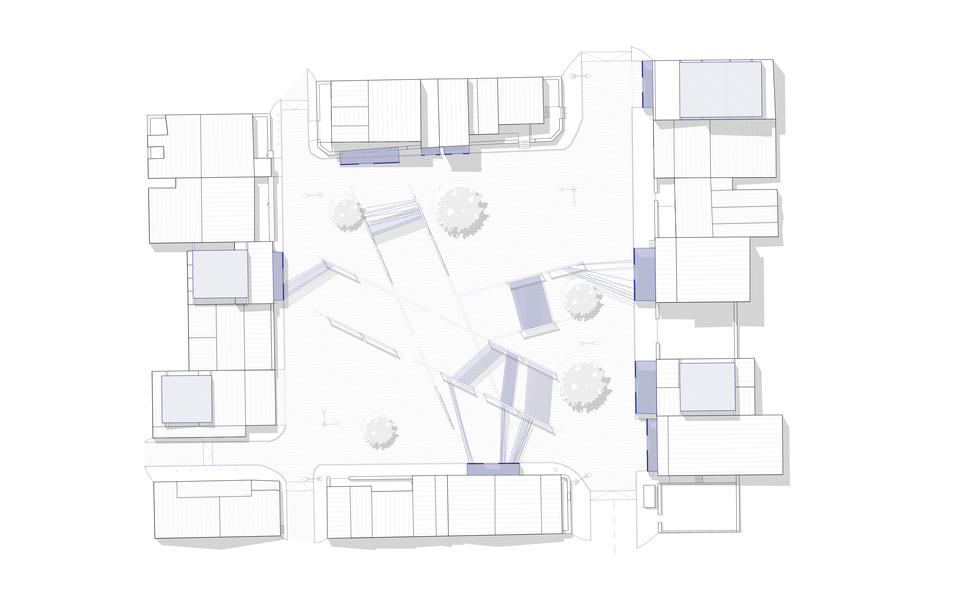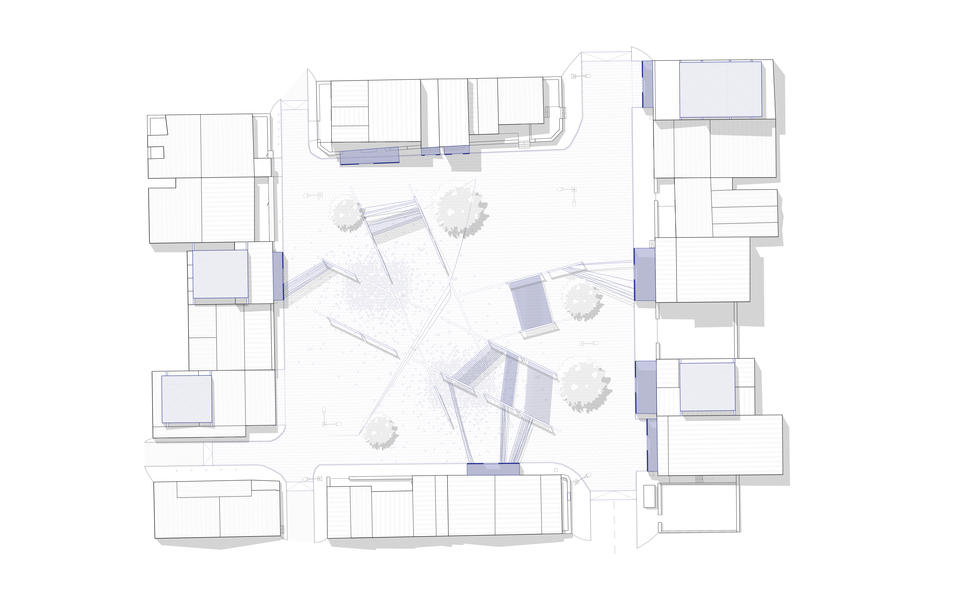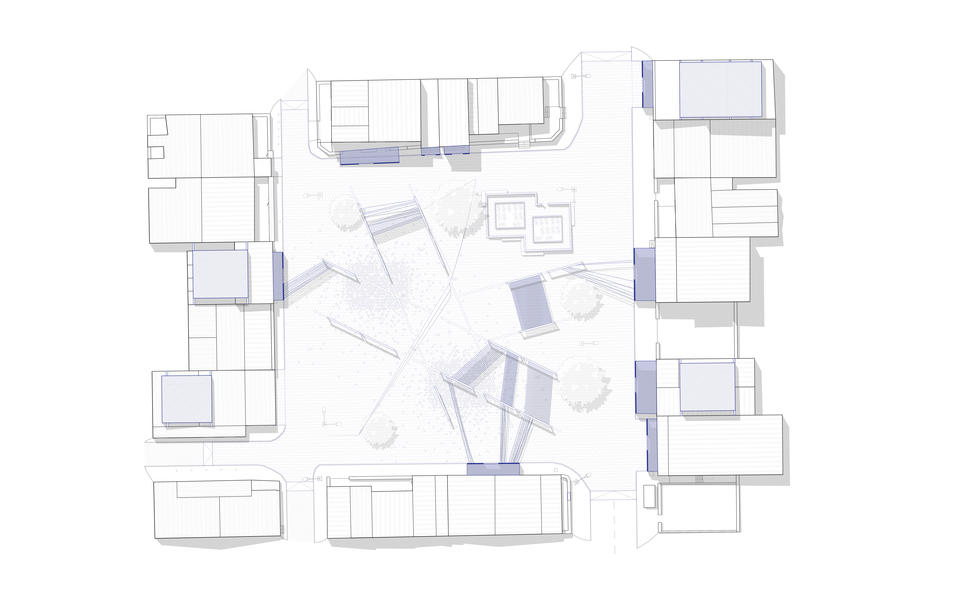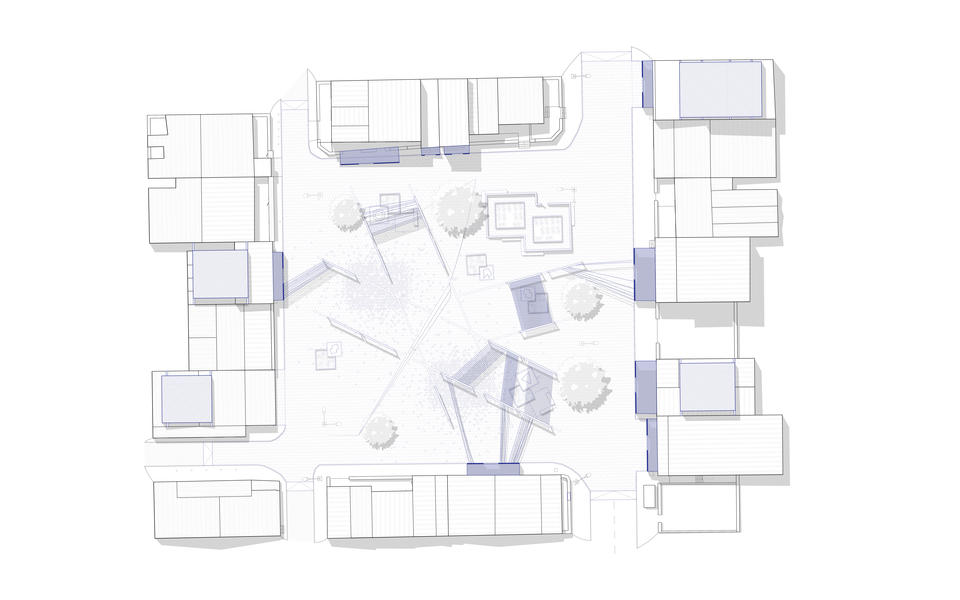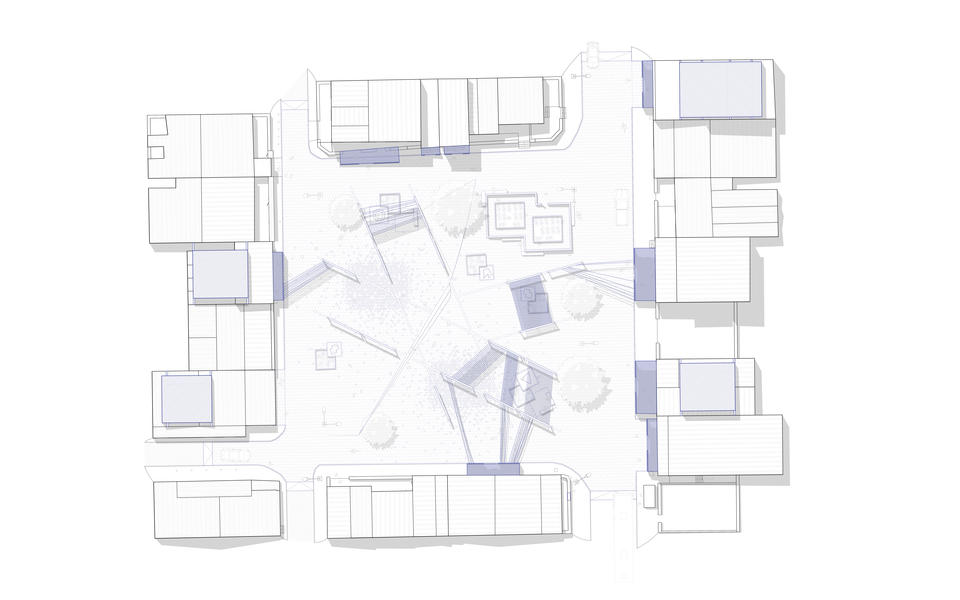NOSSA QUADRA, NOSSA HISTORIA
the power of collaborative & communal outdoor spaces as a tool for agency and belonging
Image
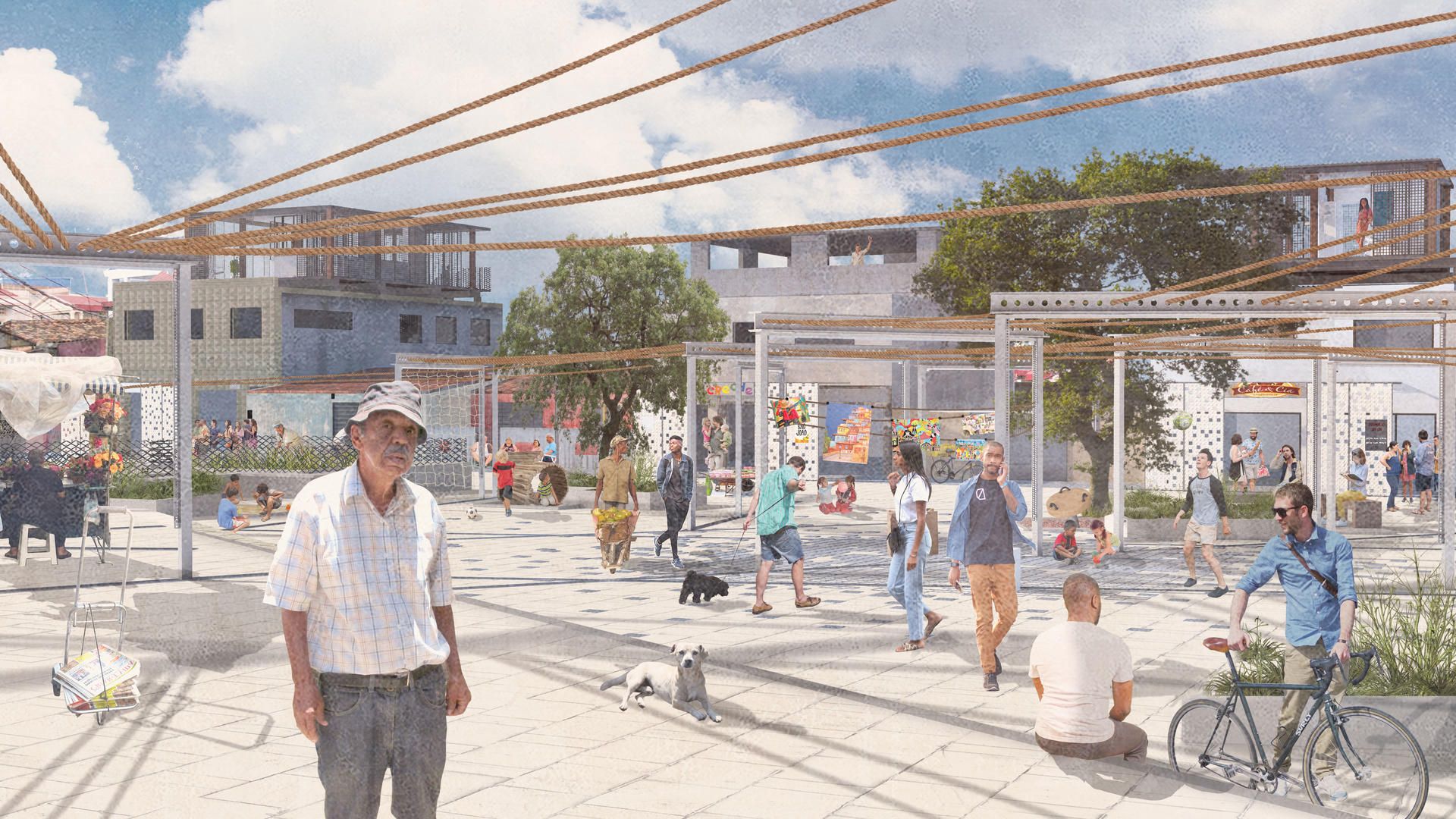
Brazil - a country with a history of colonization, slavery, precipitated industrialization, rapid urbanization, superimposed european modernism (architectural and ideological), unstable politics, growing inequity, socio-economic stratification and overpopulation combined with a lack of adequate housing for the wider population. The government has been trying to solve these issues with standardized, unsuccessful social housing projects along the periphery of the city, disregarding the population’s lifestyle and neglecting their visions. This perpetuates existing discriminatory divides, enforced through architecture and infrastructure.
This thesis attempts to improve the quality of life of the residents in the Cohab Neighborhood in Recife, which is one of the social housing projects developed in the 1960s and 1970s. As they stand, we are left with scars of the past. How can we modify what we already have through thoughtful adaptive reuse?
The project relies on ‘Quadras’ - open public squares that are surrounded by mostly residential buildings. These quadras can be found throughout the Cohab neighborhood and have already functioned as a gathering place for the residents in the past, but are now neglected and under-utilized. The inhabitants of these communities are included in the design and development process through conversations, surveys and, in the final implementation, through local craftsmanship and design choices. By using these spaces to revive urban dead spots, residents are able to deter crime through an active streetscape.
The proposed design is a network of interventions that work as tools that can be adapted by the community according to their needs. Customization and the co-creation of one‘s environment lie at the core of this thesis. The intervention is a critique on the original masterplan, with the act of claiming space as a protest against something that the community had been neglected in the past - agency and their voice. The set of guidelines for the intervention can be applied to every Quadra in the entire neighborhood, generating a network that not only activates COHAB but eventually also reaches beyond and reconnects it back to the Recife’s larger social context.
Image
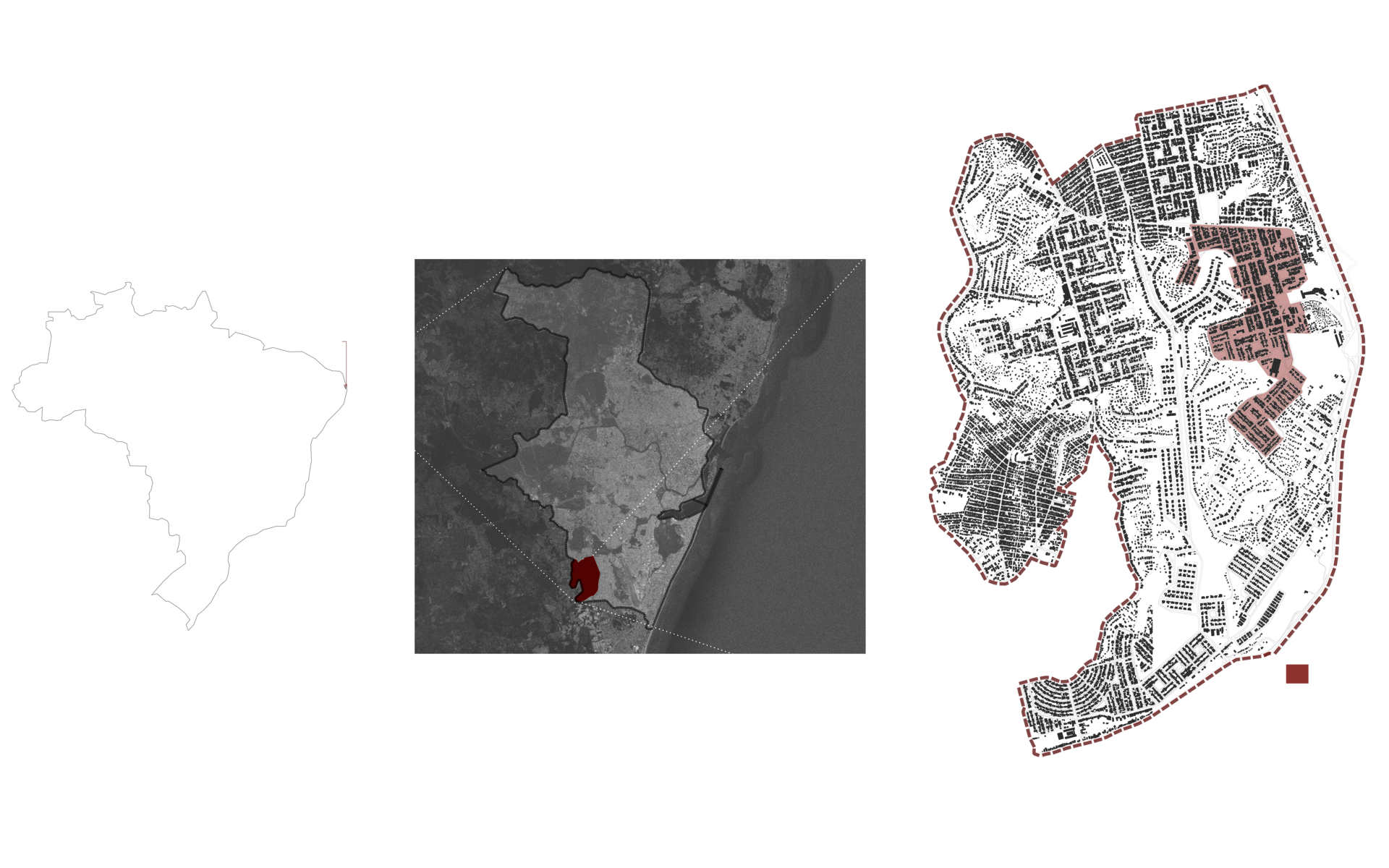
INTERVENTION STRATEGY
Image

The intervention strategy lies in the act of expanding the Quadra to the edges of the buildings, and with that taking over the street. It is an act of claiming space and agency that the population had been neglected in the past. Housing projects for the low-income population were too small to house the often large families, disregarded their daily routines and habits, and were constructed on the lowest budget possible.
This expansion consists of the „insertion“ of the Bacia (the basin), connecting the street elevations to each other horizontally as well as vertically. This basin is a catalyst for a series of smaller interventions, which create an entire network.
Image
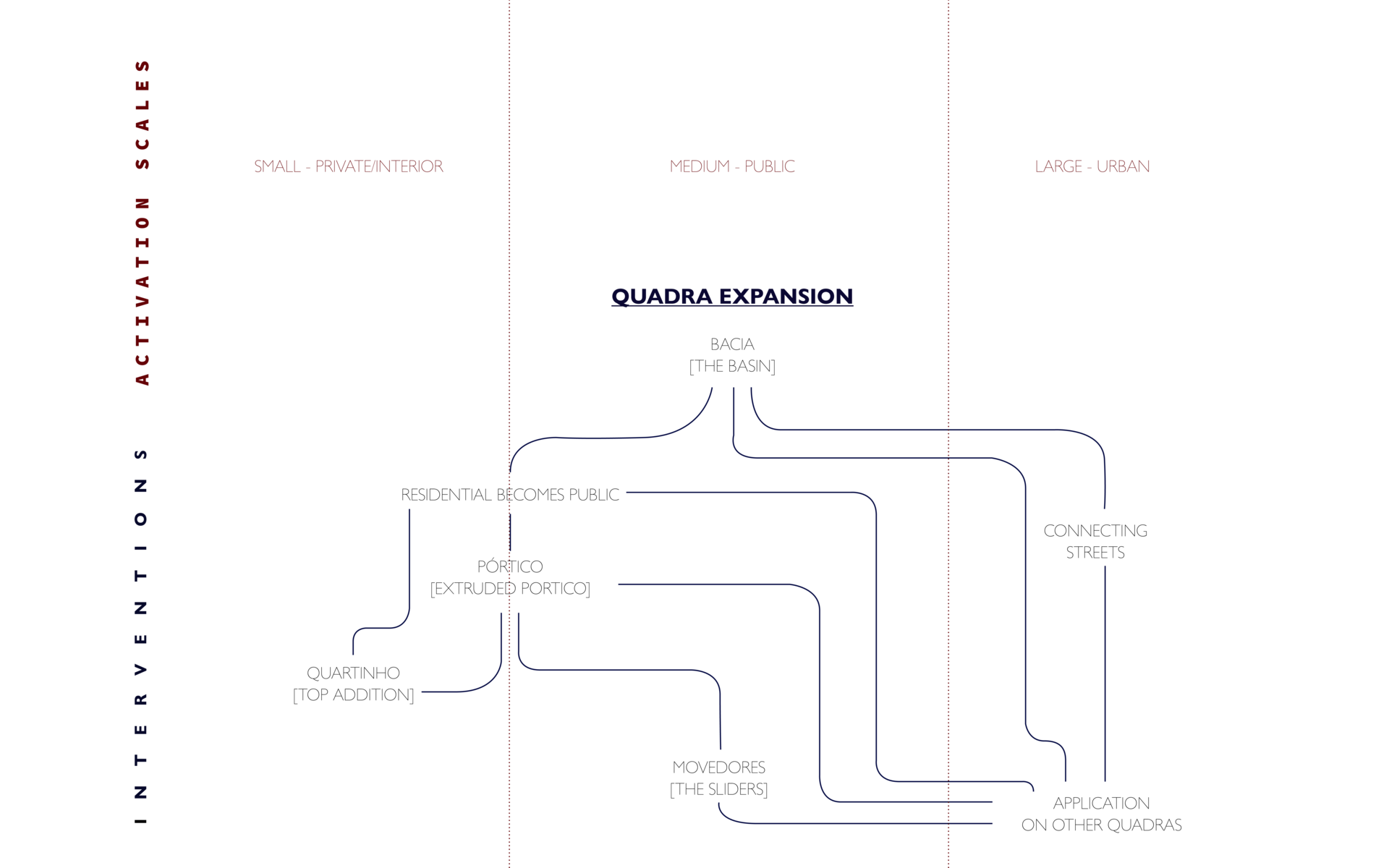
Image
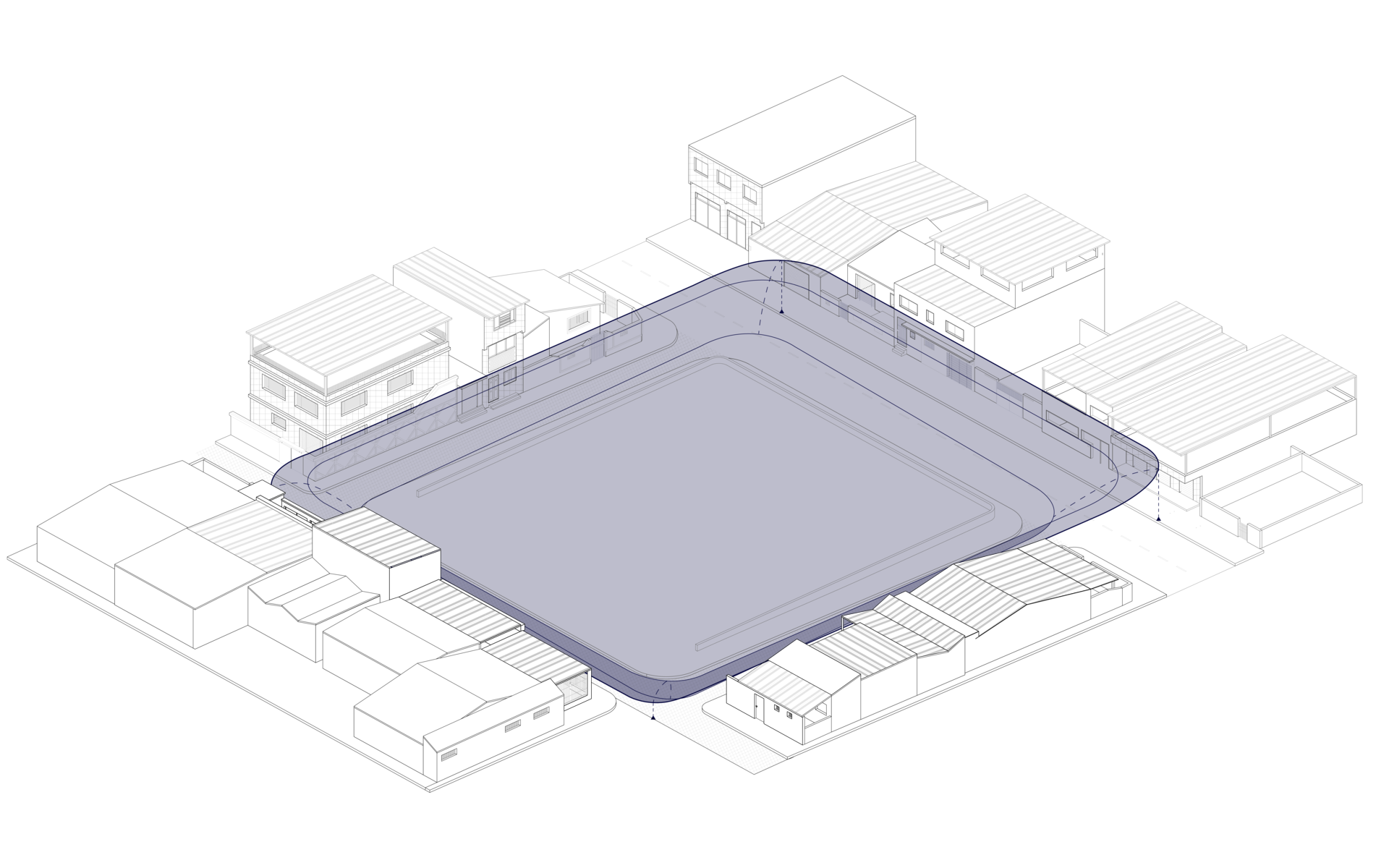
Image
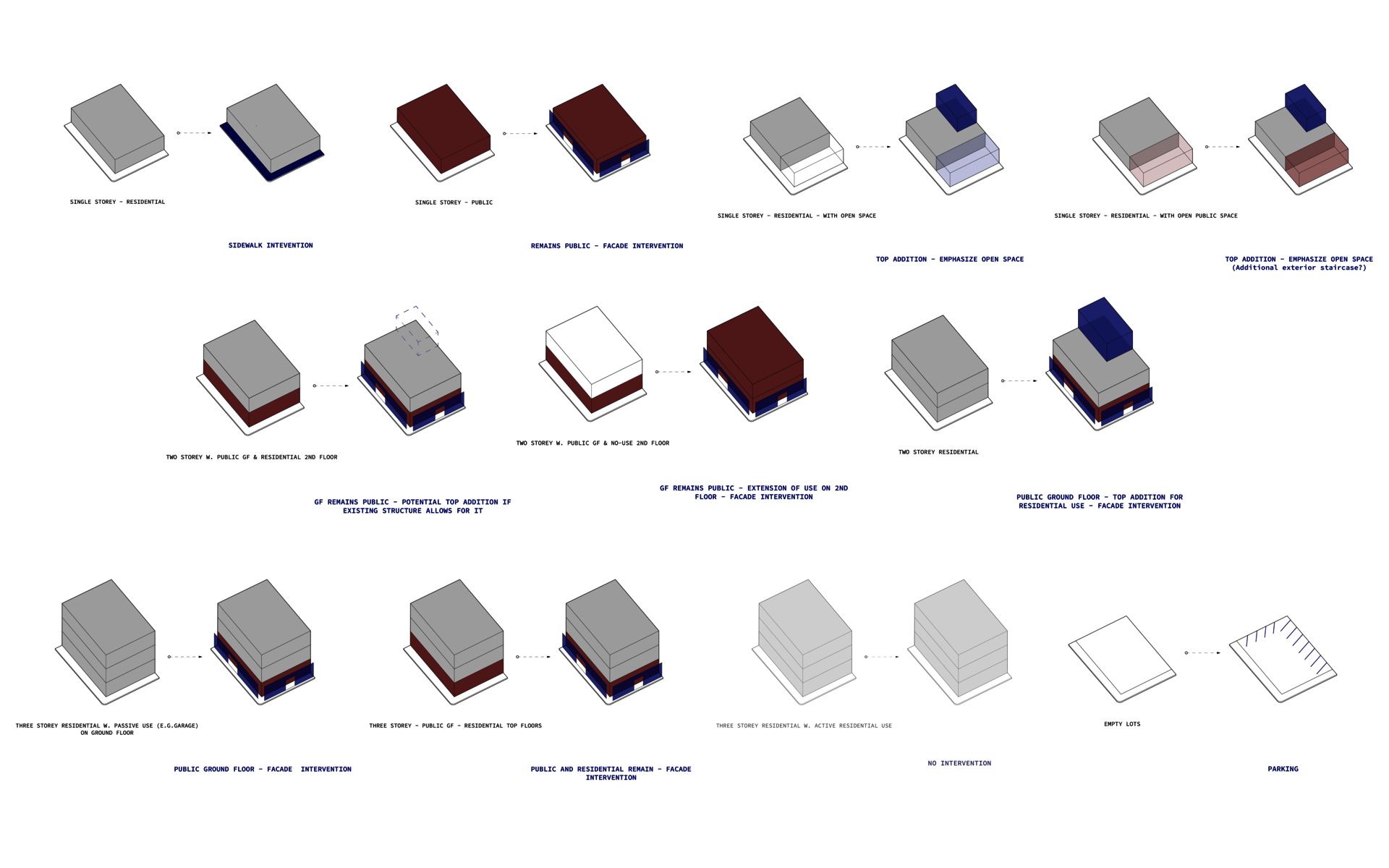
This set of rules and guidelines explains which buildings around the Quadra will be intervened on how and why. This part of the intervention shifts the residential life to the upper floors and inserts a public program that positively contributes to community life into the ground floor and activates the street life. Some of these buildings will in turn receive an additional residential space on the top.
The guidelines are based on the existing amount of storeys and the current use of the building’s ground floor. In spite of these rules, the existing structural conditions of the individual houses have to be taken into consideration when adding another floor. This approach is justified by the already existing tendency to either rent out the ground floor of one‘s house to businesses (restaurants, bars, shops, stores, etc.) or use it as storage or garage space. This strategy introduces more active uses and targeted programs that benefit the community and activate its economy.
O PÓRTICO
Image
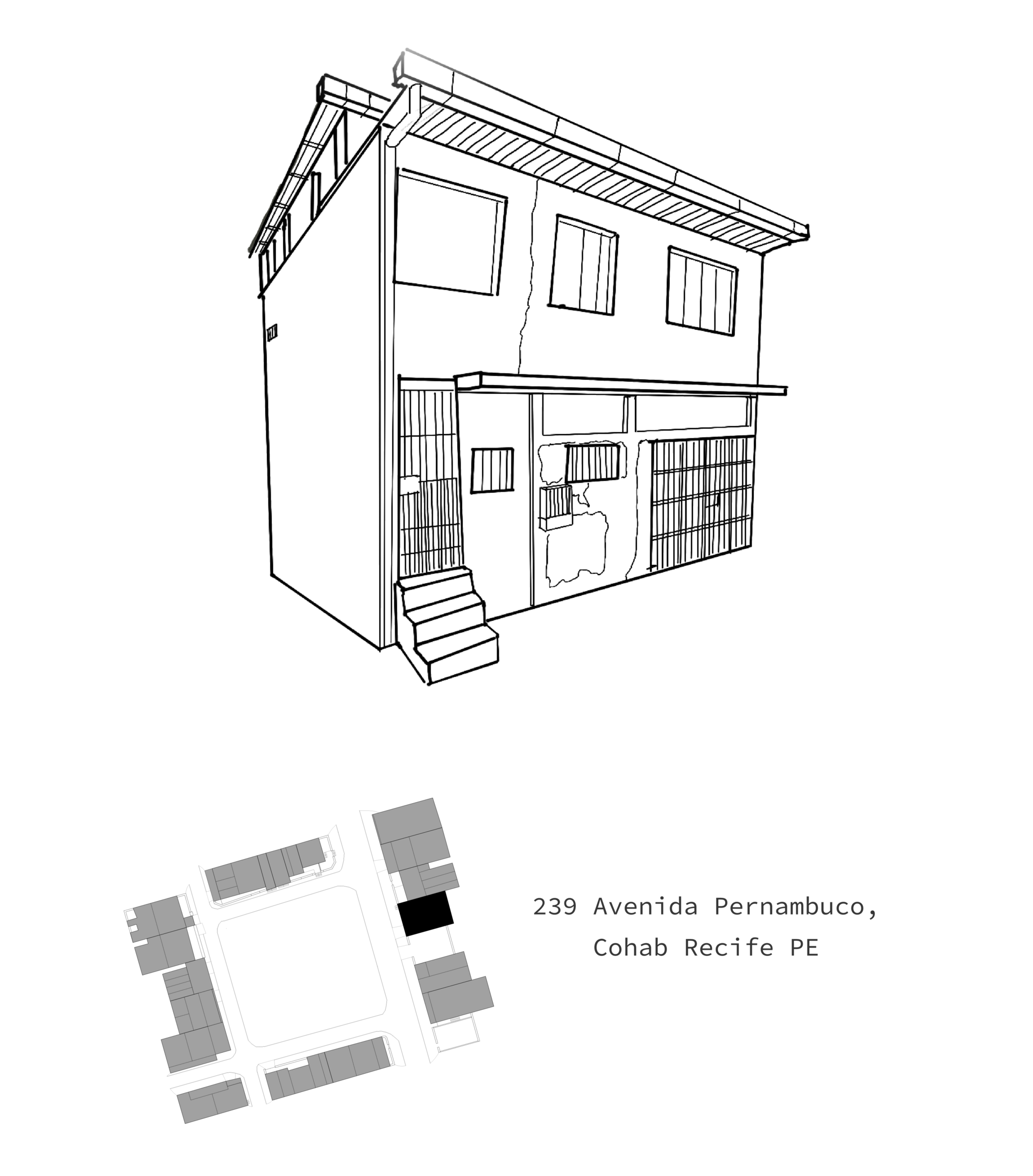
Image
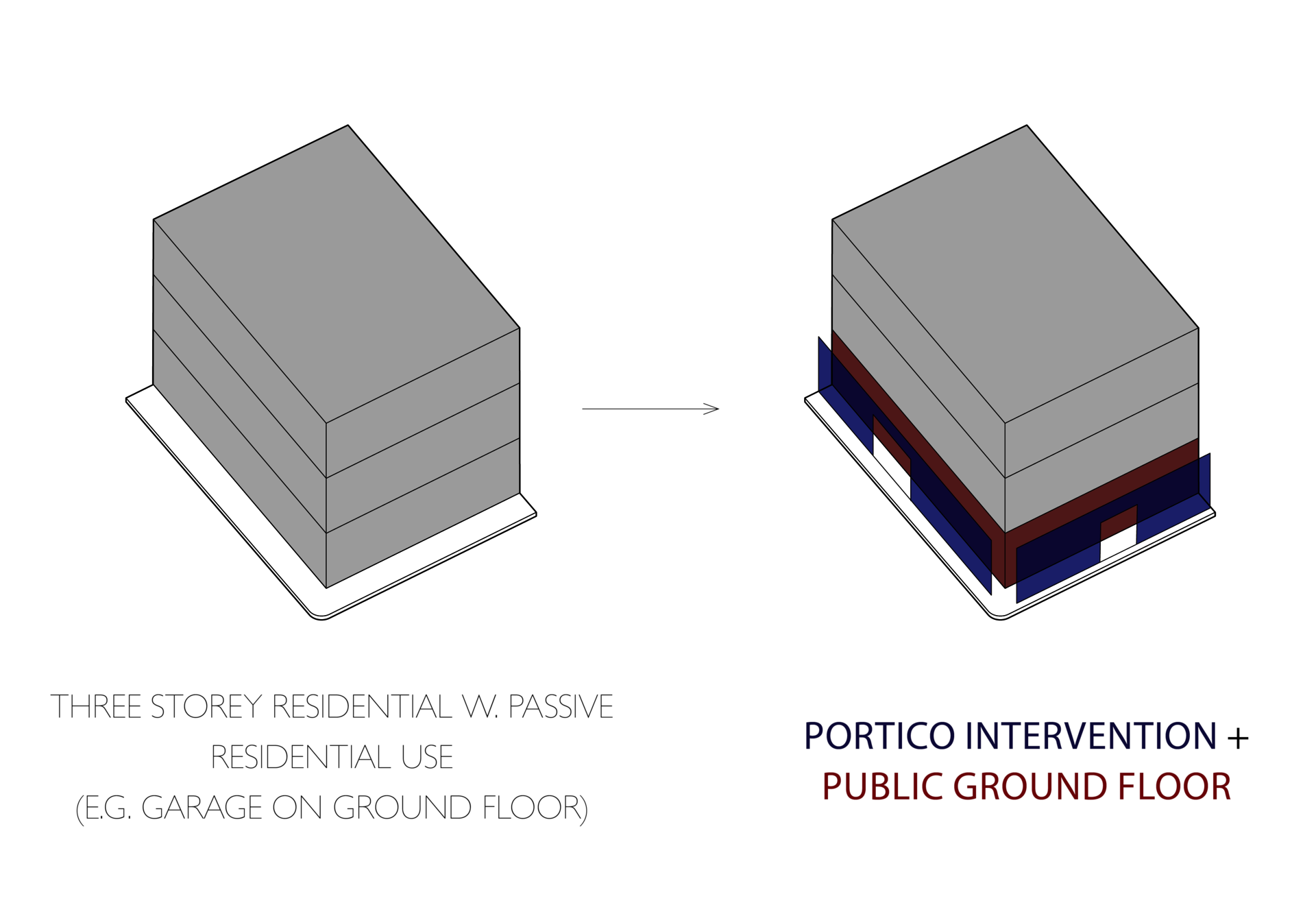
In the following case study for the „O Pórtico“ intervention we will be using guideline H and applying it to one of the houses located on the Quadra (239 Avenida Pernambuco). This house is a three storey building with a passive residential use of a garage on the ground floor. According to the chart on the previous page, the new program should be from either category one or two. In this case the chosen program is a Lanchonete (engl. snackbar), for lunch and quick bites.
Image

Image

The Pórtico consists of limestone tiles, the same pavement material of the new quadra, that clip onto a modular aluminum grid. This leaves room for customization and participation in the design. Other things that can be attached to the grid are chalk boards, to write on promotions of the day, or poster boards to announce special events.
What this Portico does is, it signals activity from far away, helps to unify and connect the public space, offers shade on the sidewalk, works like a vestibule for people to gather and it allows for customization. The negative space of the tiles allows for the old to peek through the new - so we are not covering up the old, but acknowledging the past in the process of moving on.
Image

O QUARTINHO
Image
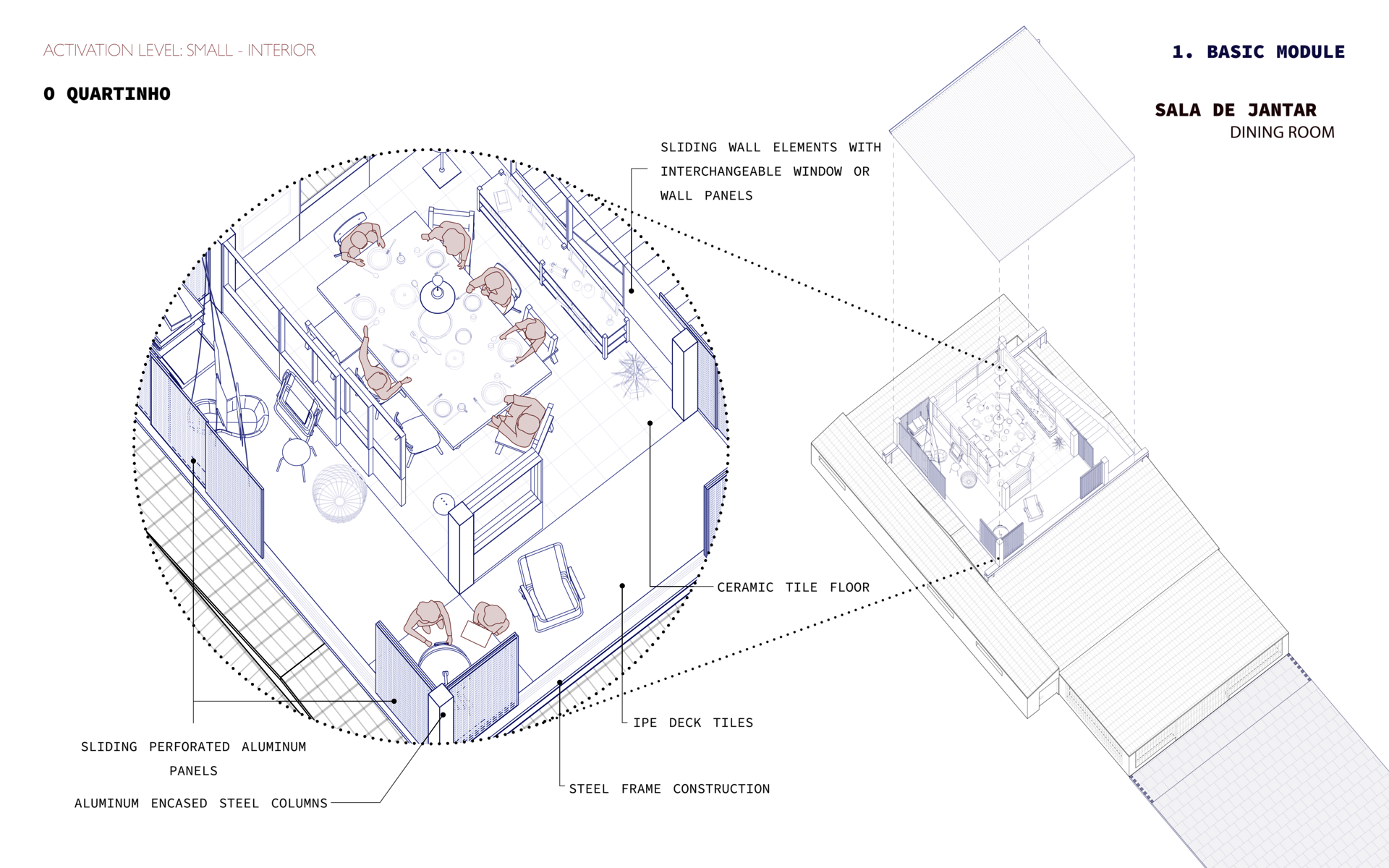
As a compensation for taking up parts of the residential ground floor, certain houses will receive a modular top addition according to the established guidelines. The addition sits on top of two (or more) steel beams that are placed ontop of shorter steel colums transfering the weight into the exterior load-bearing walls of the existing houses. This way the existing drainage of the roof is not altered.
The basic steel-frame module consists of a 3x4 meter living space, surrounded by a patio with brise soleil aluminum grids, matching the material of the Pórtico on the ground floor. The module itself has one-meter sliding wall elements with interchangeable wall and window components. Ceramic tiles are used for the interior floor, and plasterboards for the interior ceiling.
The patio can be extended all the way around the interior module or left out entirely. However its benefits are the shading and ventilation mechanisms of the perforated aluminum ventanas. The interior module can be extended as well and up to two complete modules can be placed on top of a building.
An additional stair is inserted into the roof and encased with walls on the floor below to protect it from the weather (a drain has to be installed as well).
Image
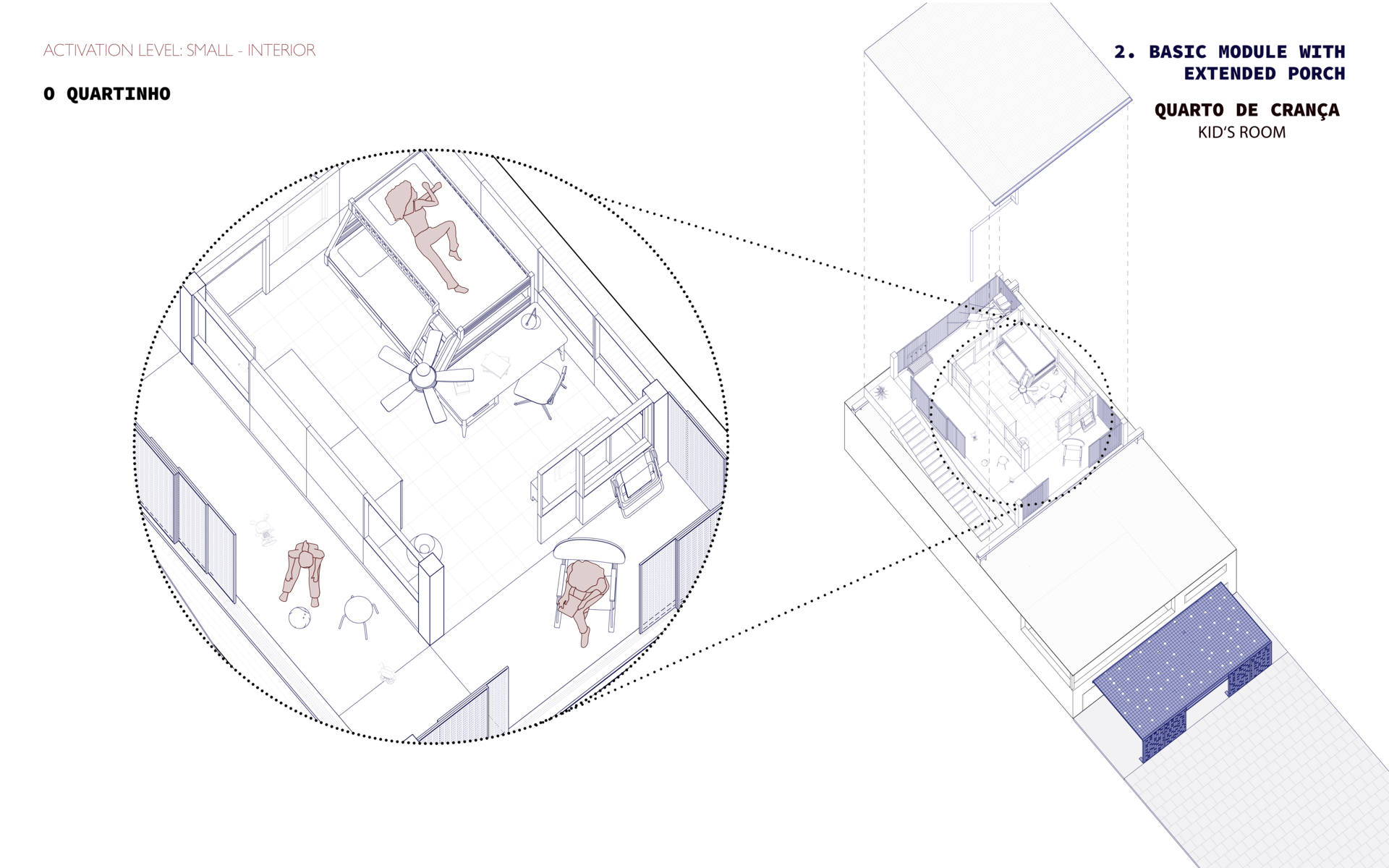
Image
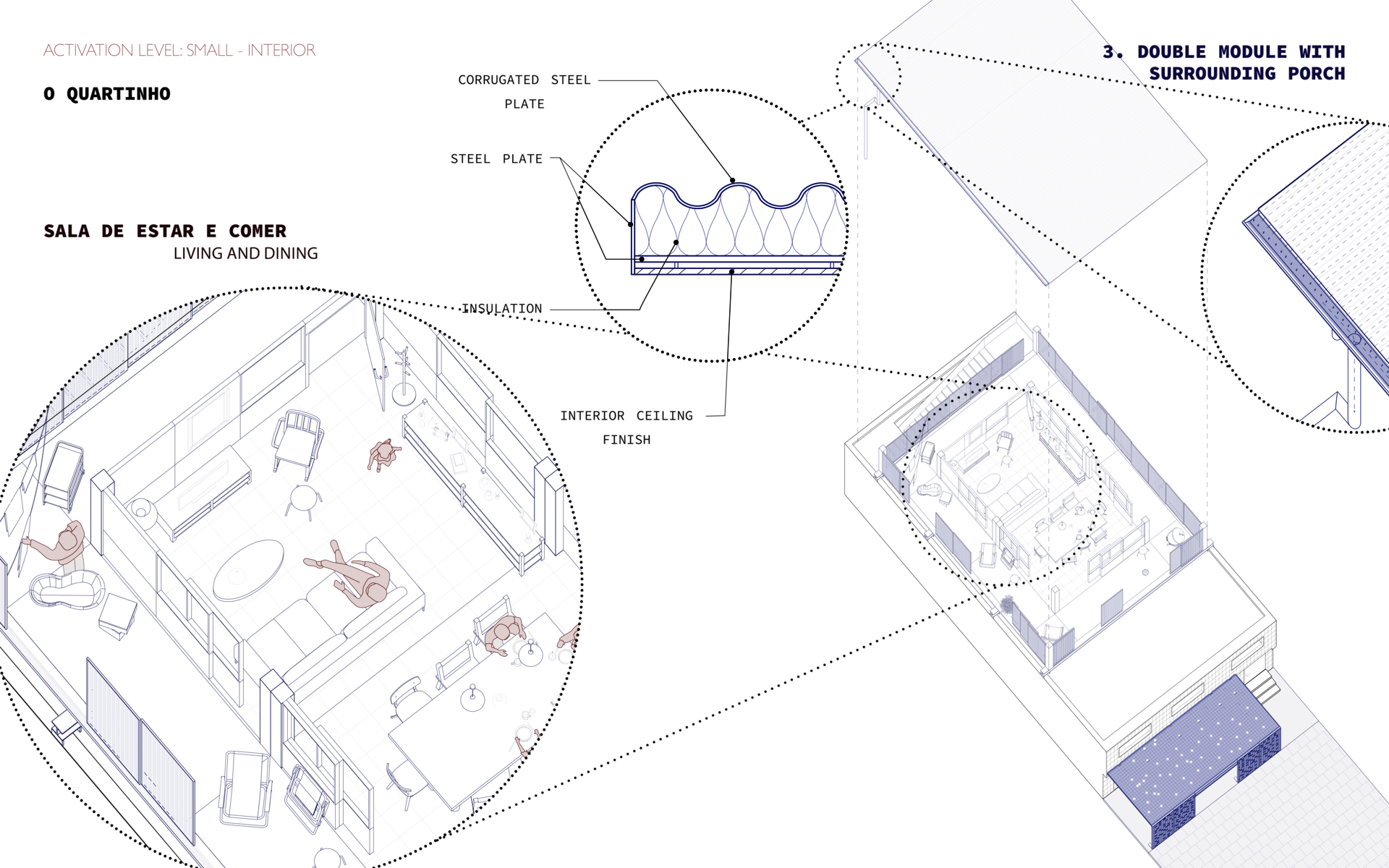
OS MOVEDORES
Image
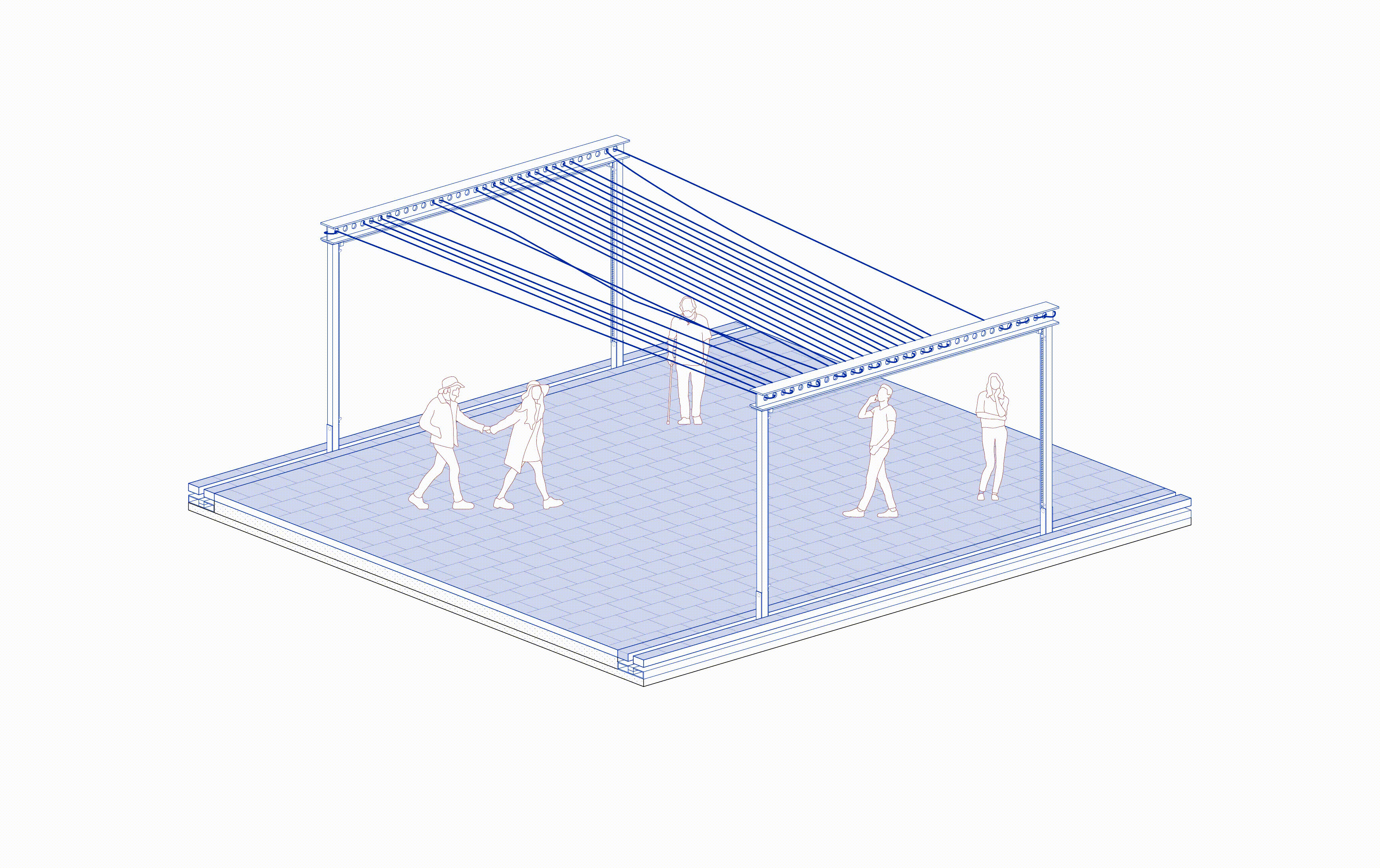
Image
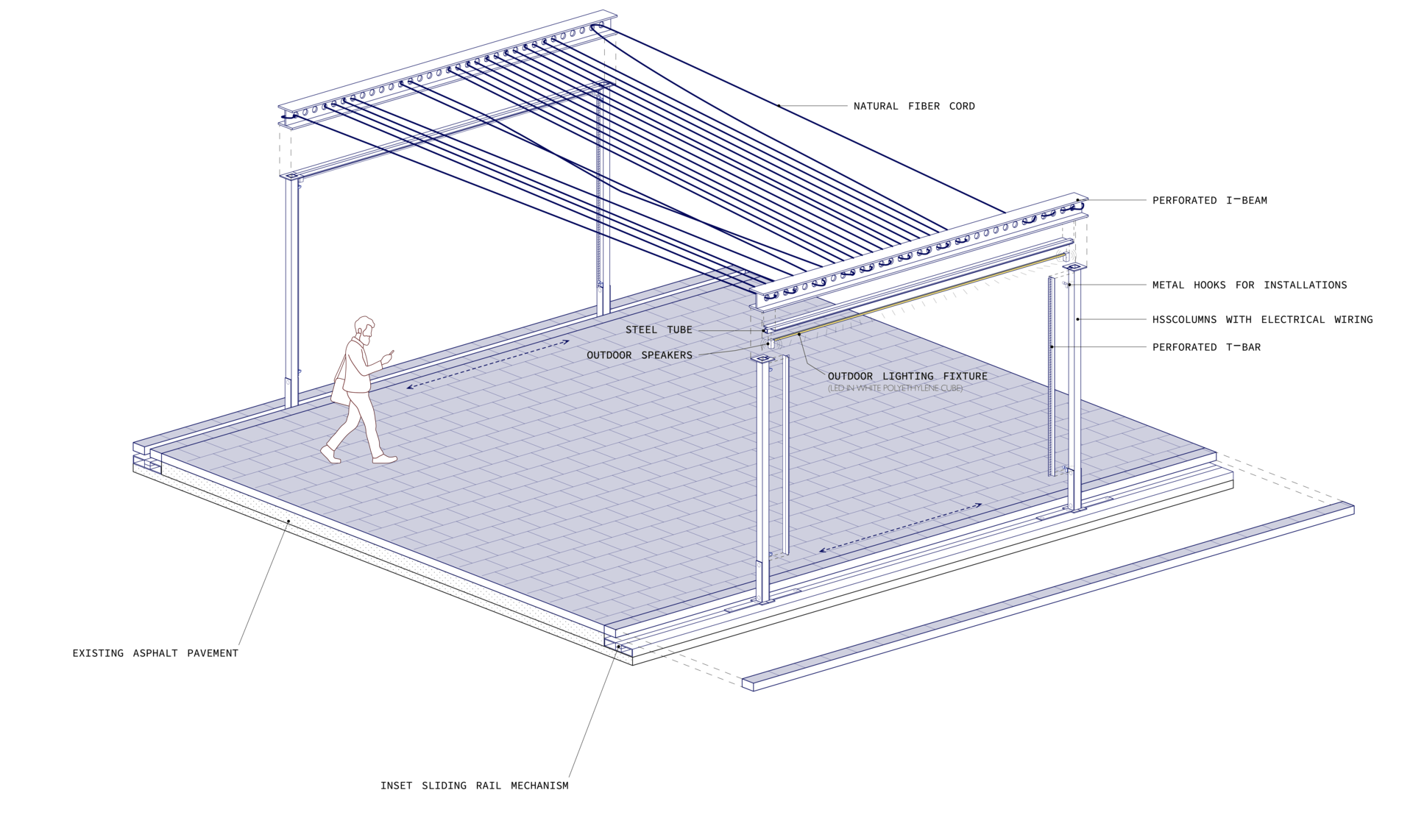
The top part of the sliders is a perforated steel beam through which the community members can string natural fibre cords and connect single Movedores to each other. An endless variability of patterns and combinations can be created, leaving artistic freedom to the people using tha quadra. Those strings can also be drawn back to the Porticos that informed the Movedores in the first place.
The steel frames also have perforations on the sides to allow for horizontal webbing, creating a backdrop for nomadic vendor stands, art installations, or performances. A horizontal steel tube carries electric wires from the columns for outdoor lighting and speakers. Little hooks on the steel columns make it easy to attach things such as soccer nets.
The sliding rails are inset into the new limestone pavement and also carry the electrical wiring.
NOSSA QUADRA
This is the moment in which all little interventions come together and create a wholesome and interconnected design. Just like there are guidelines for the smaller parts, the quadra itself was also designed following a set of rules.
1) Extension (Image 2)
The first step lies in extending the quadra to the edges of the sidewalks, taking over the streets and creating a raised zone, in which pedestrians, bicycles and vehicles co-exist.
2) Pavement (Image 3)
Limestone is the chosen material for the new pavement due to its durability, weather-resistance and local availability. Another reason is the reference to the ‚portuguese calcadas‘, a common, mosaique paving method from Portugal that was brought to Brazil with colonization. Intentionally using the same material but in a different layout is a metaphor for walking on the traces of the past.
3) O Pórtico & Os Movedores (Image 4-5)
The porticos inform the position of the movedores and therefore also the main axes that will be shaded by the Movedores. These shaded paths will indicate suitable gathering zones, as well as the placement of other landscape elements.
4) Gathering (Image 6)
Since the quadra has had its history of a place of exchange and communication it is important to enforce that characteristic by loosely signaling areas intended for gathering. A change in texture and color of limestone pavement loosely indicates gathering zones during events or throughout the day. A dispersed group of these pavement stones is placed on these areas that are mostly left free from landscape elements other than shading. These groups break the rigid grid of the limestone pavement - a metaphor for breaking the idealized and standardized grid that people tried to place on top of Brazil‘s society - particularly speaking of the ‘formal‘ way of living that the government has been trying to enforce on its citizens.
5) Community Garden (Image 7)
A community garden is a prescribed element of the quadra. It shall be placed according to the most beneficial sun conditions (and in the case of this quadra it is placed close to the community kitchen as well). Its main purpose is to grow ingredients used in the community kitchen. Such garden is also a great way of educating the community about the importance of healthy eating and teaching them how to eventually easily grow main ingredients in their backyards or terraces, which also has economic benefits.
6) Landscape Elements (Image 8)
Image
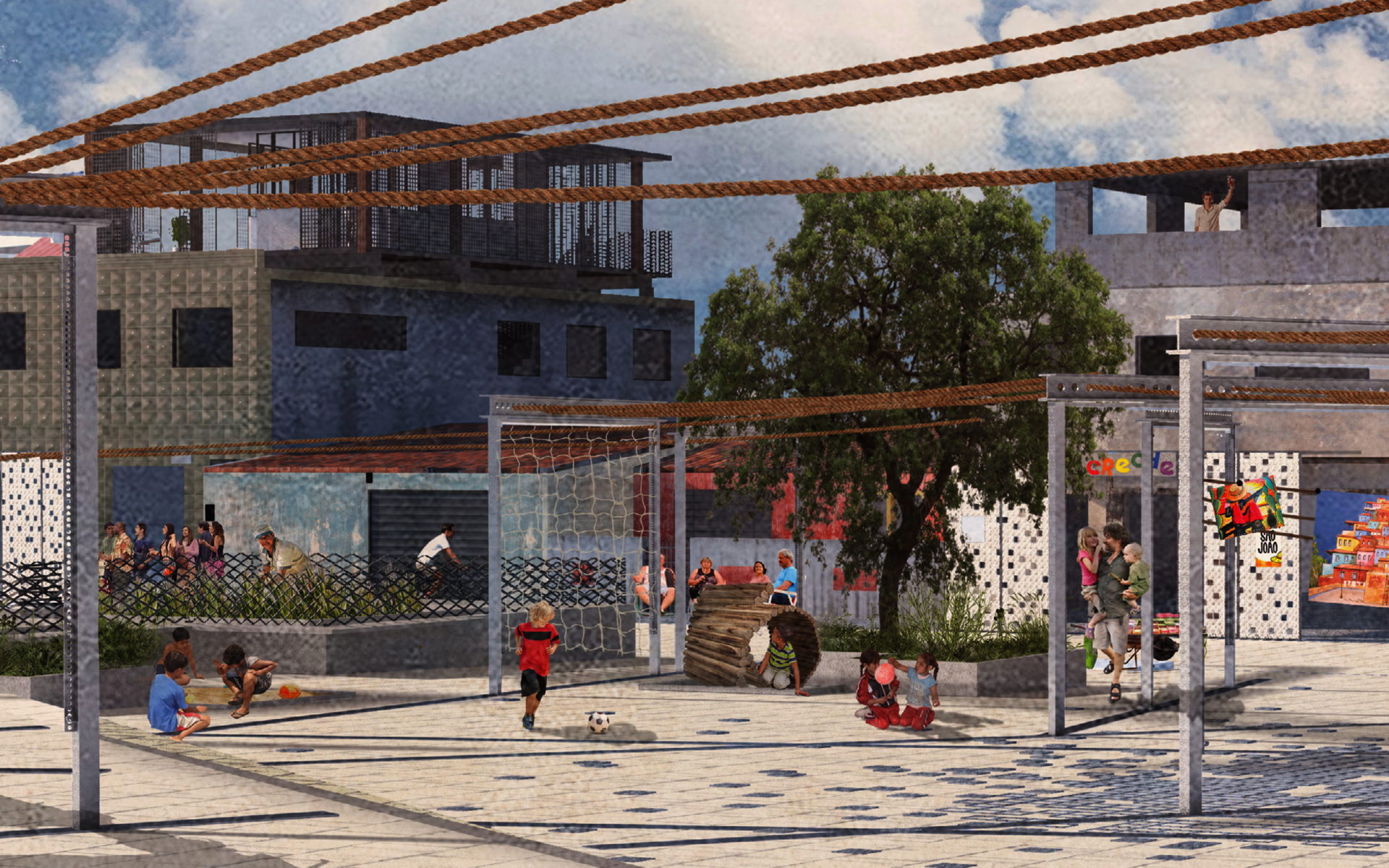
Image
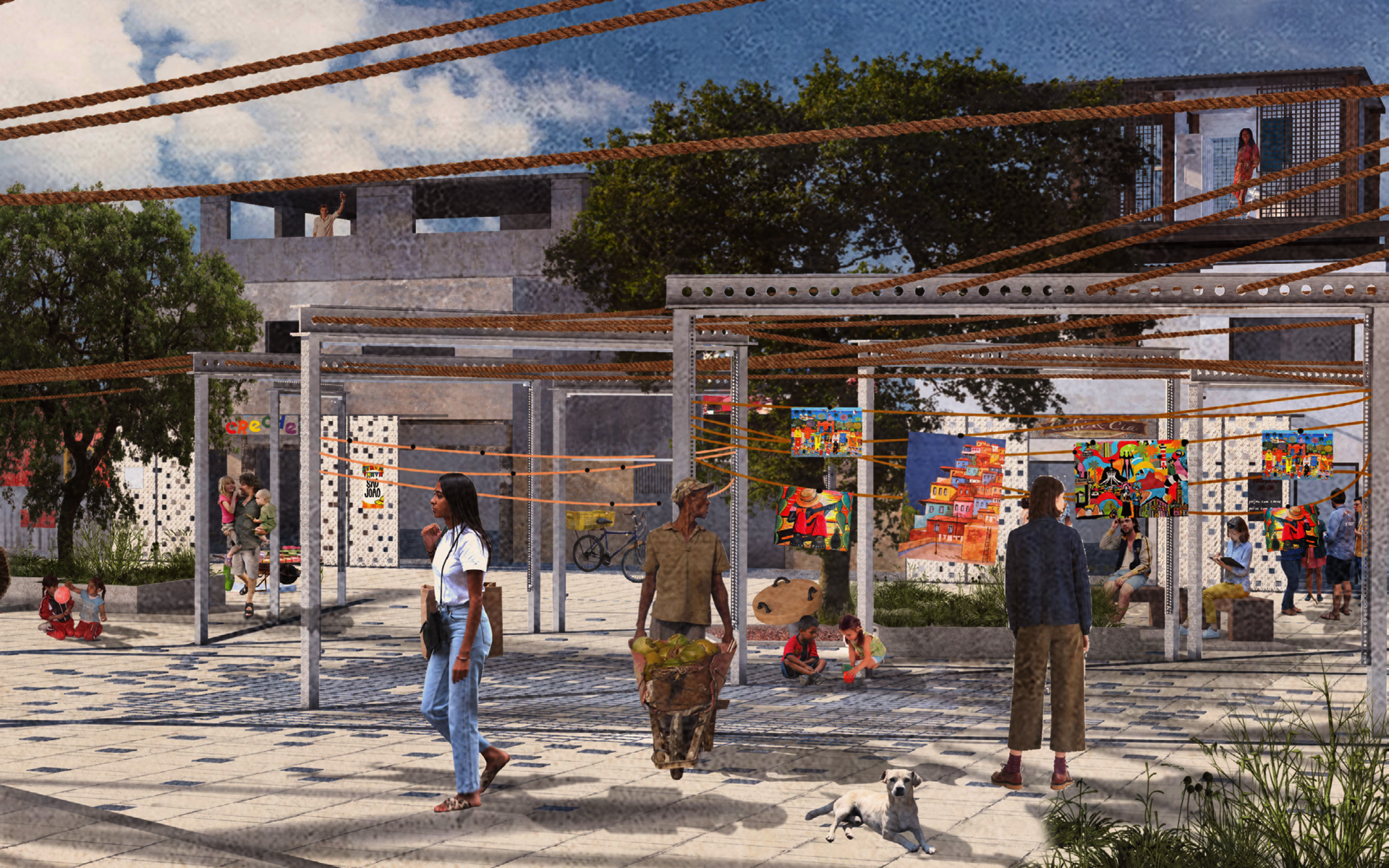
Image
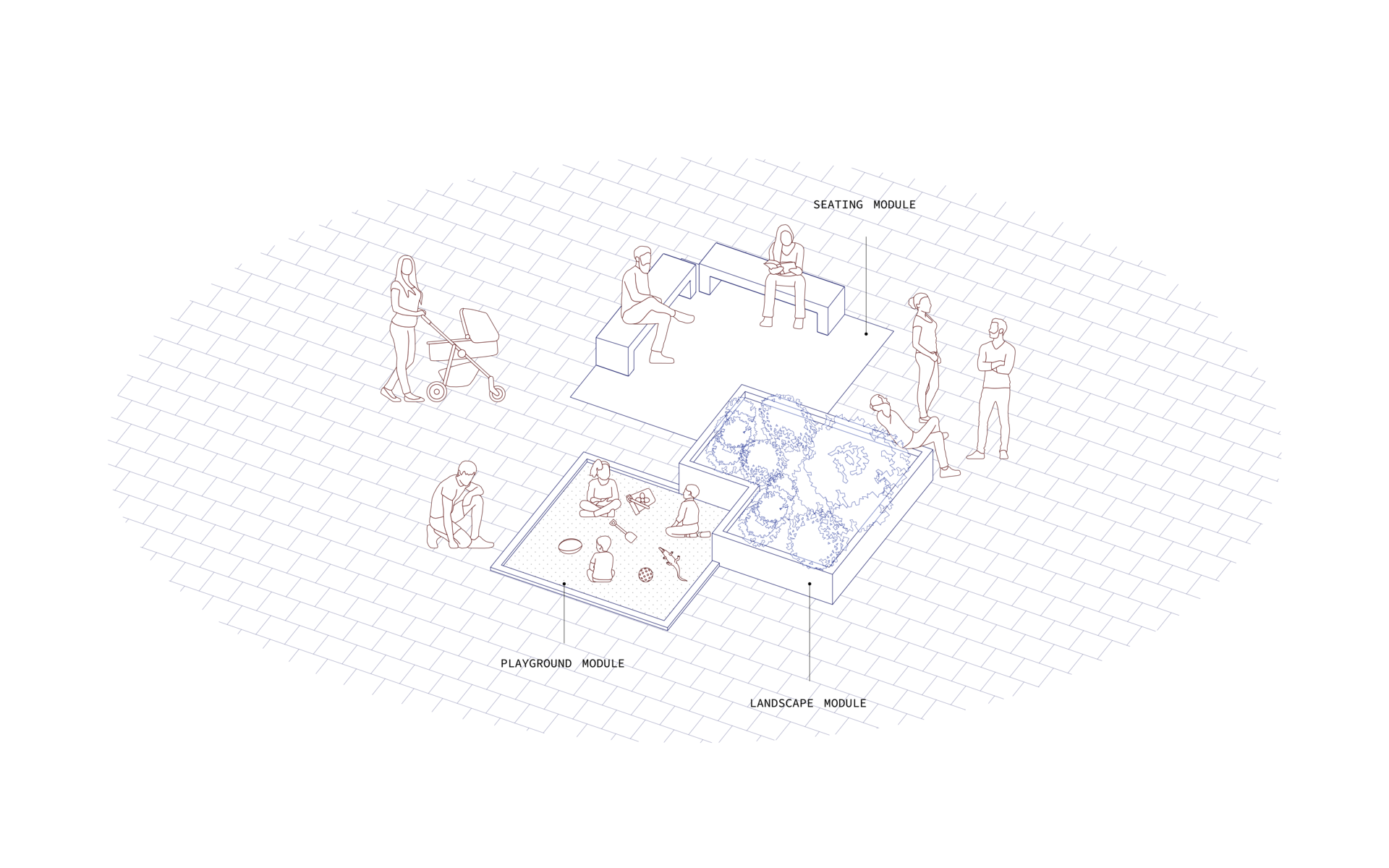
Rather than having a single designated seating area and playground, the design includes three different modules - playground, seating, greenery - that are supposed to be repeatedly distributed across the quadra. The three do not have to come together but can also stand individually. Having multiple small playgrounds, rather than just one, facilitates a more even distribution of activity across the quadra and prevents any deadspots. The playground module can contain a sandpit or or single wood-based play equipment such as spinners or abstract ‘sculptures‘.
Image
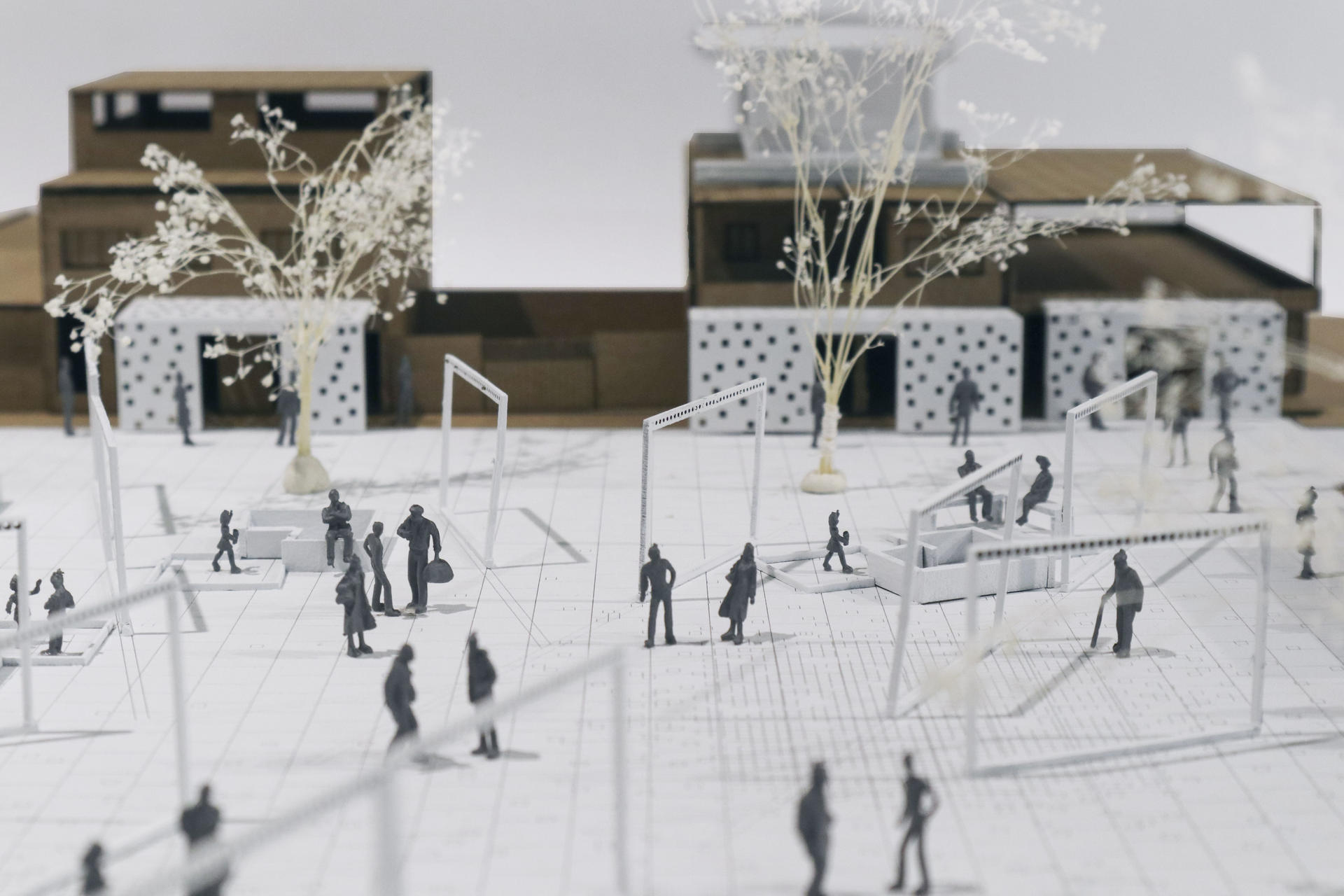
Image
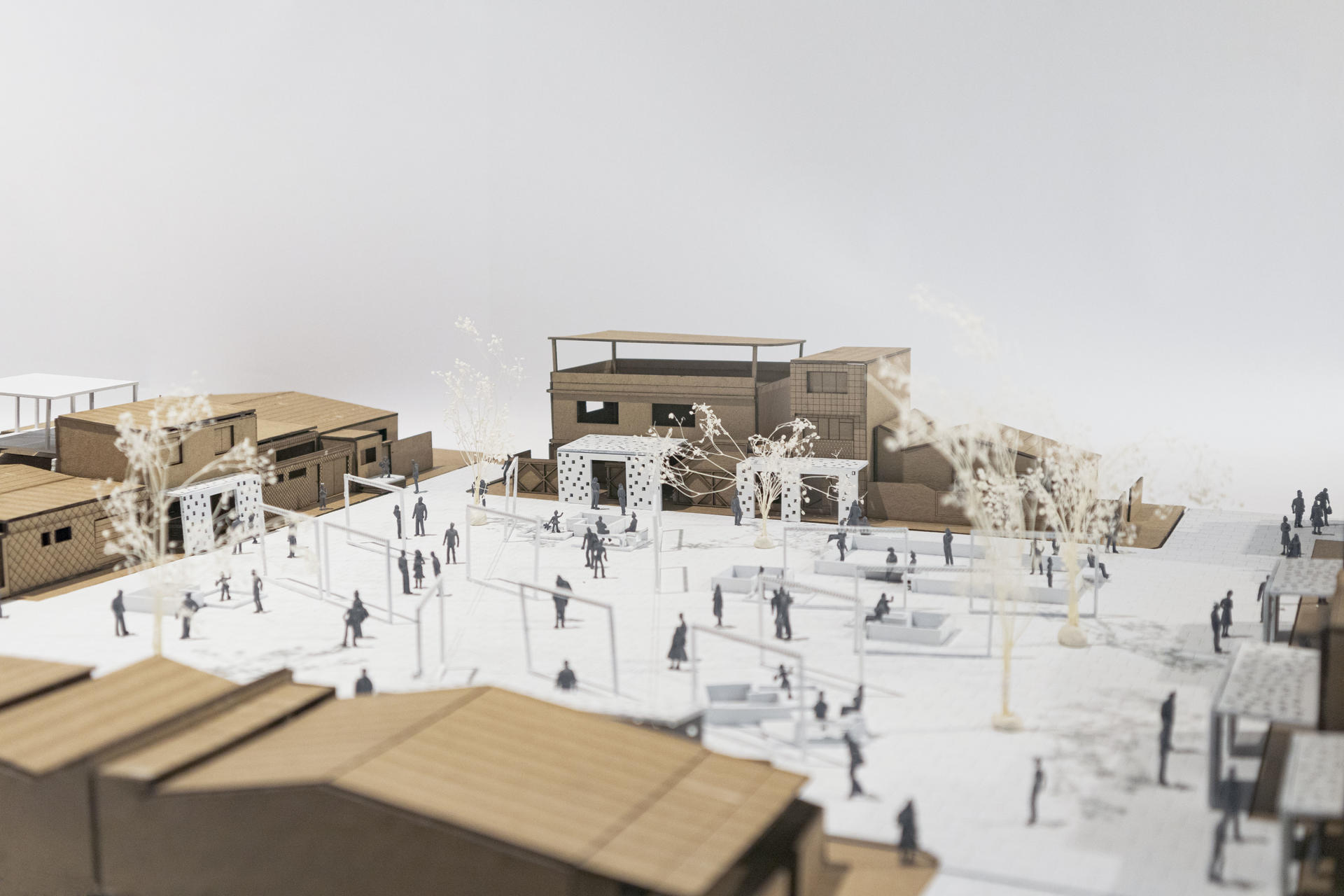
Image
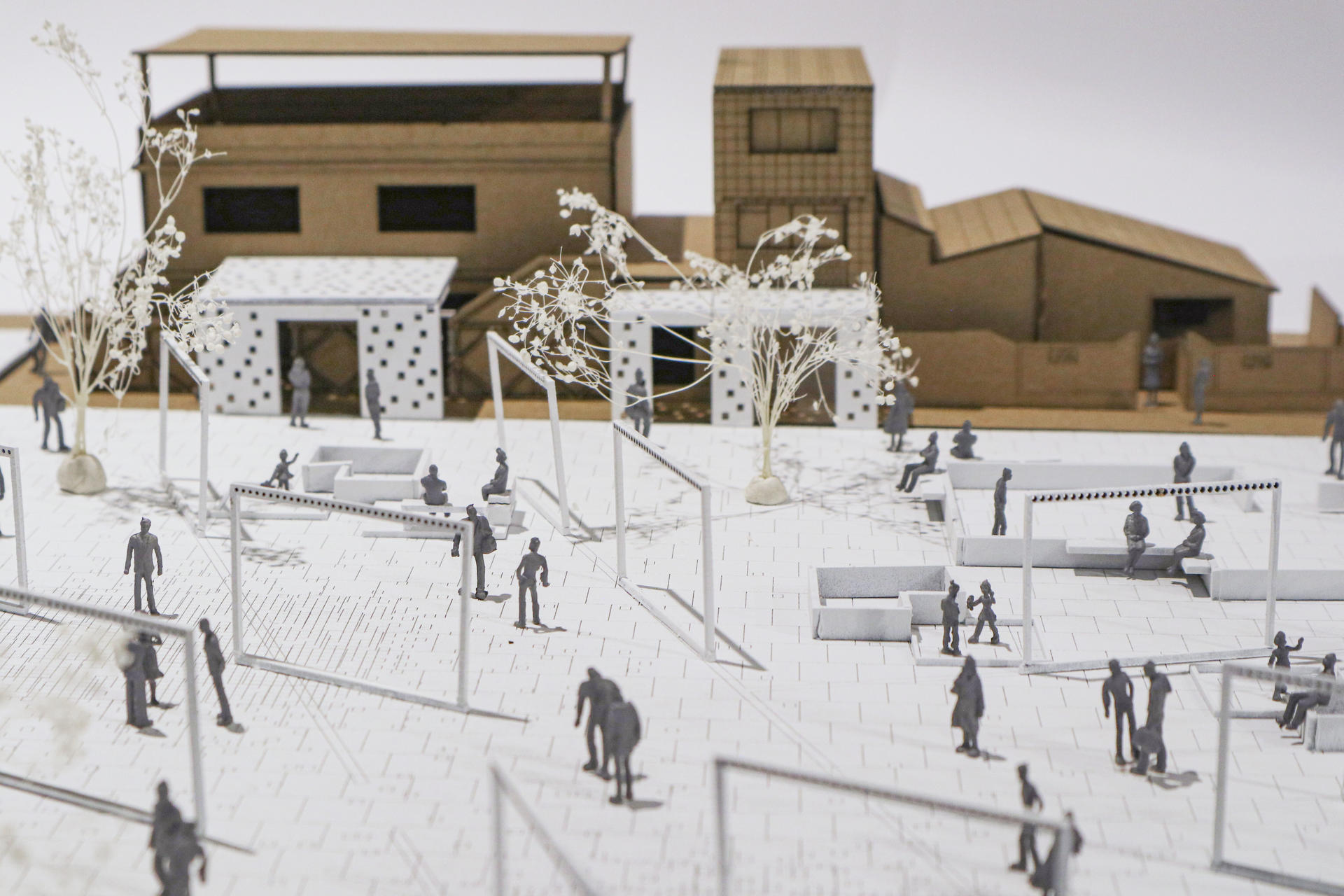
Image
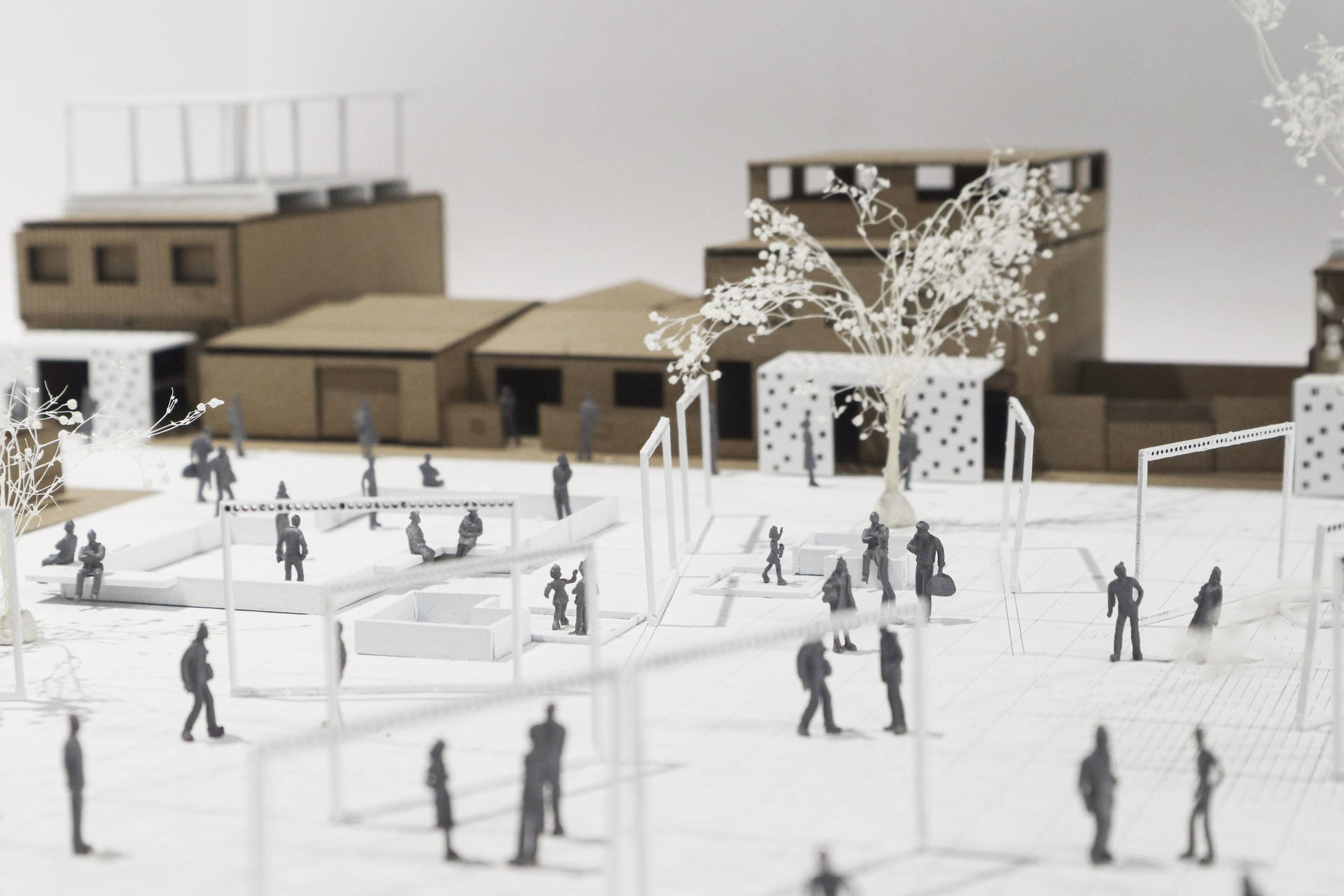
Image
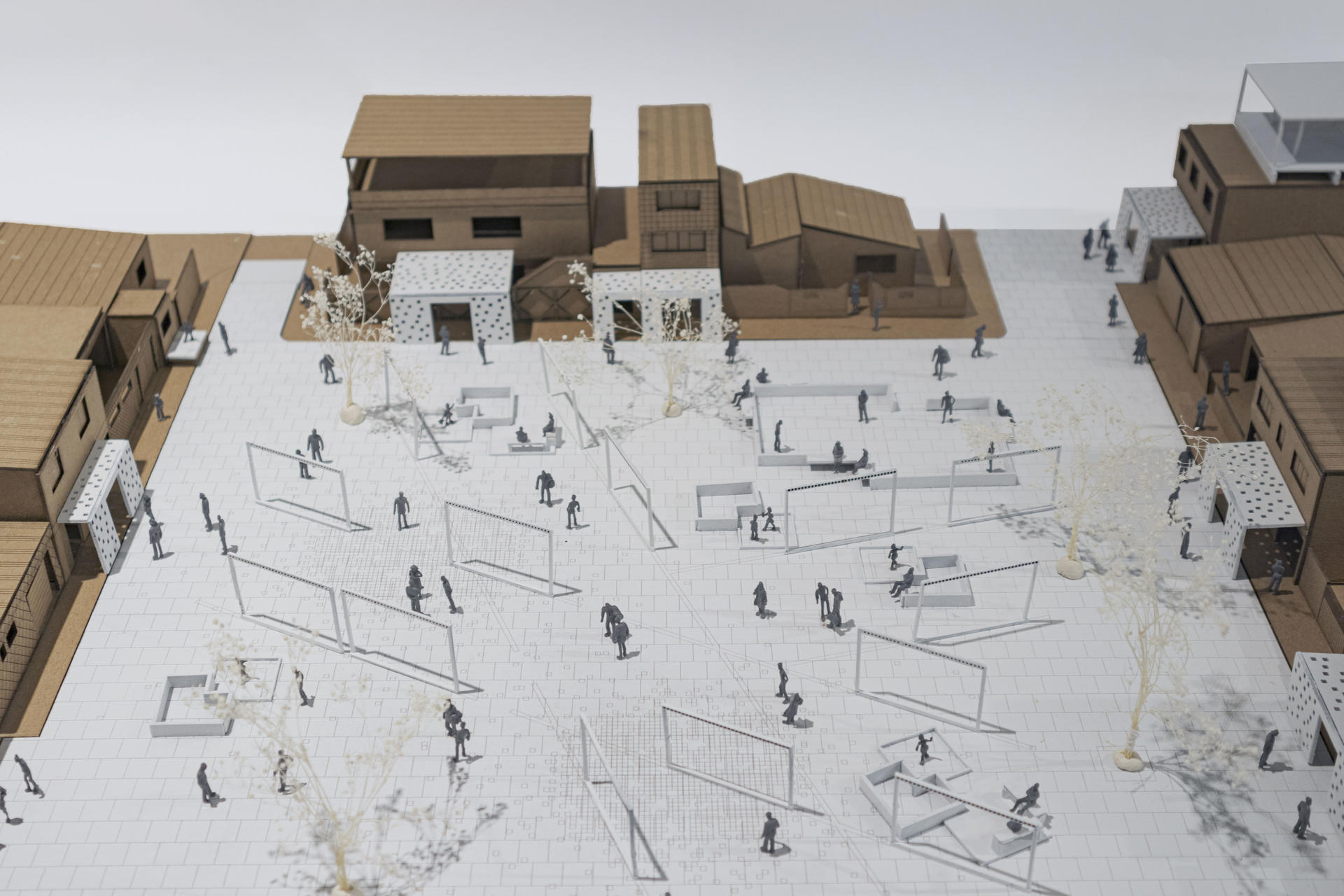
Image
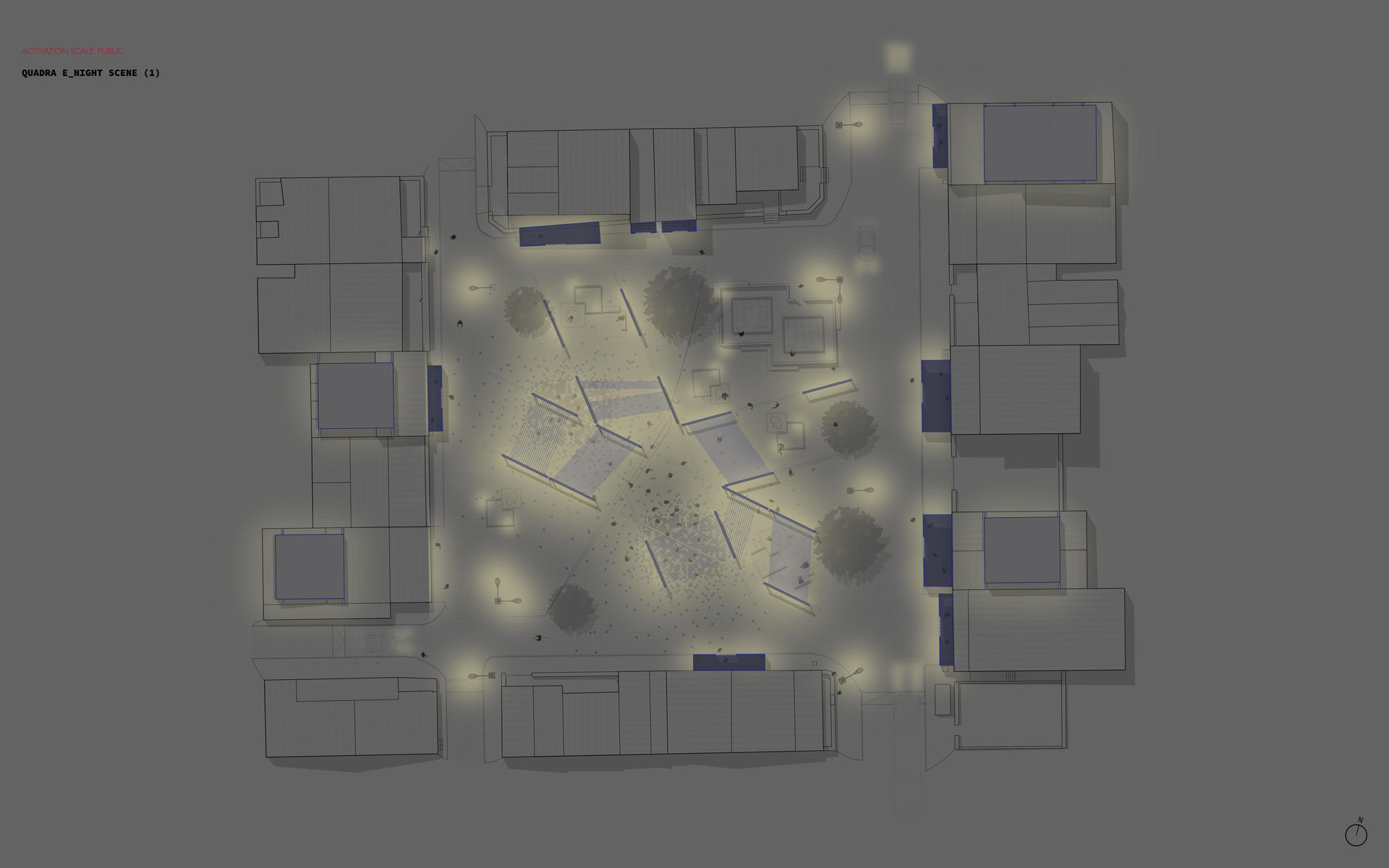
▲ Night Scene of the Quadra
Image
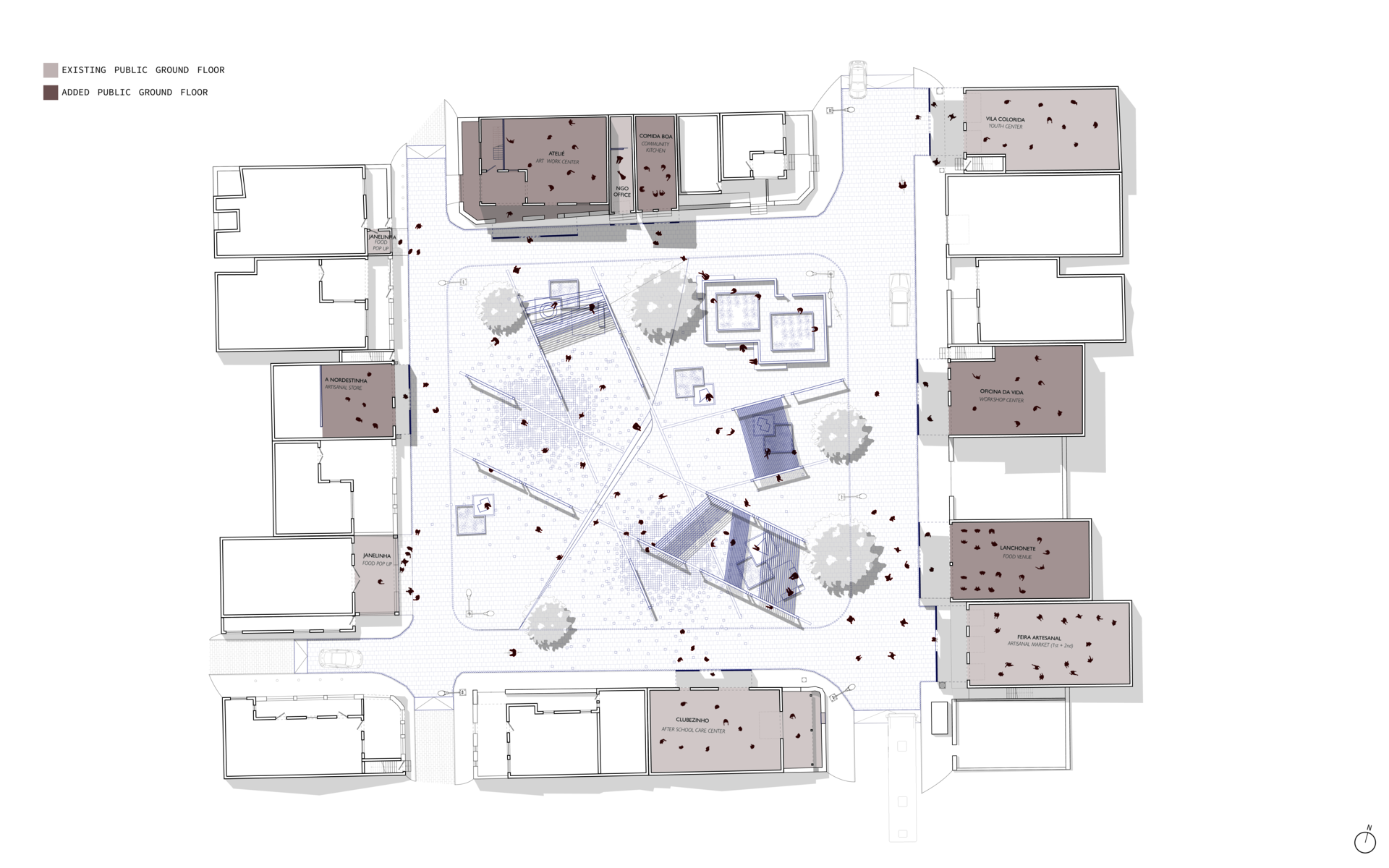
▲ Proposed Program & Activation
Image
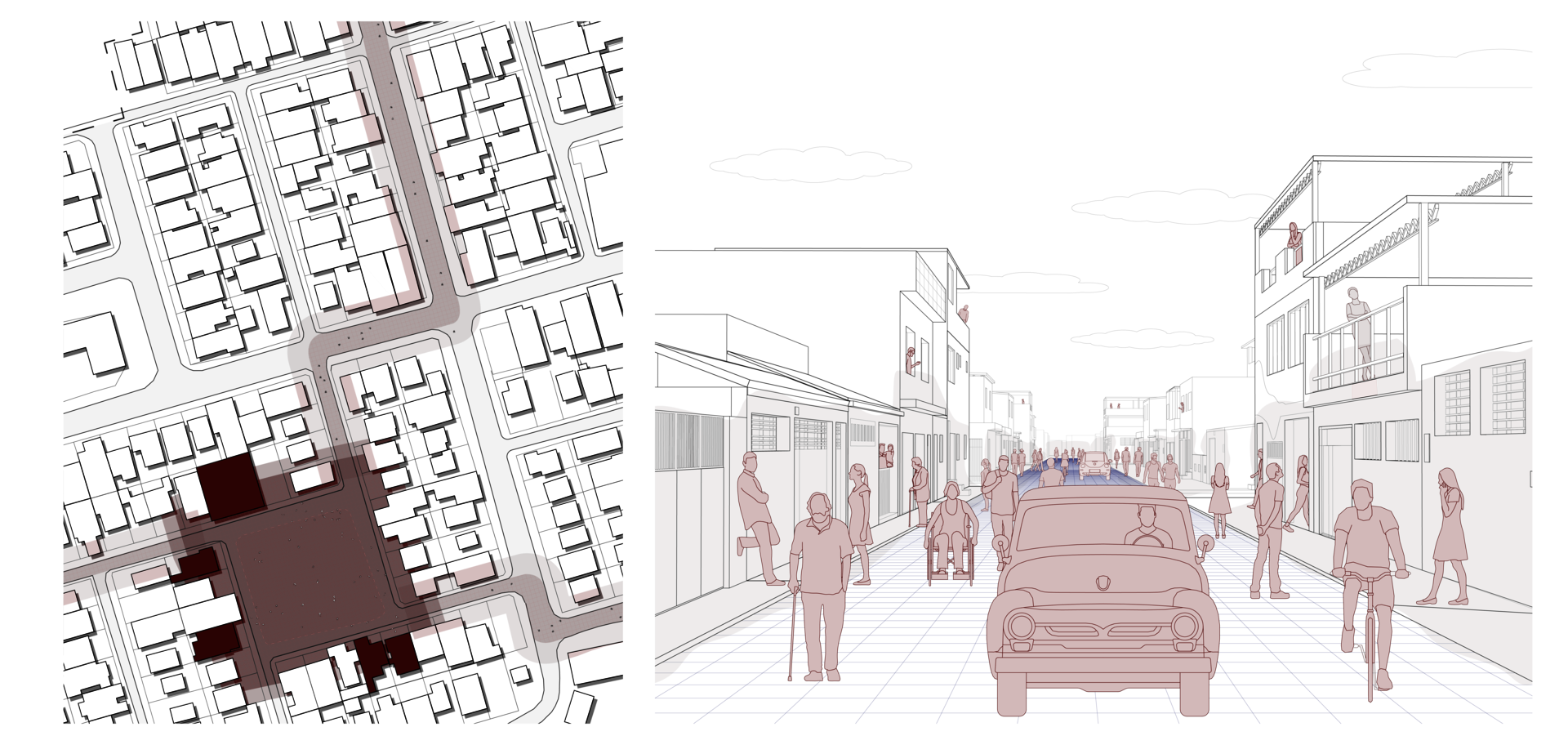
▲ Extension of the Intervention onto the Streets Connecting the Quadras
NOSSA CIDADE
Image
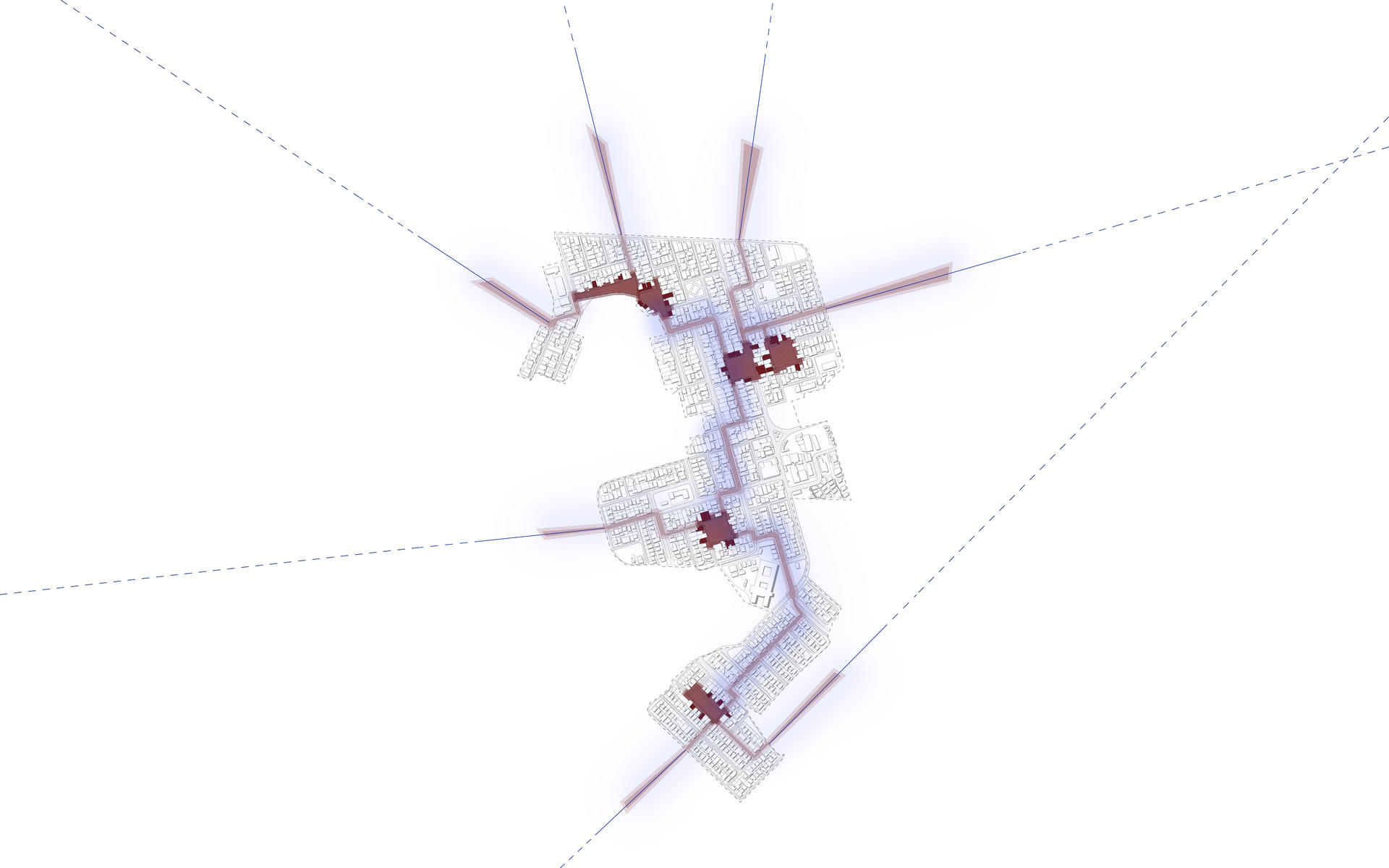
The larger goal of this thesis was to create a set of guideline interventions that can be applied on any other Quadra (public space) in the neighborhood of Cohab. As shown here, all the Quadras of UR-1 have been redesigned, and with them also some of the roads connecting the Quadras. The same pavement strategy has been applied to the streets and created a shared space for pedestrians, vehicles and bicycles.
By repeating these interventions an entire network is created that not only activates the entire neighborhood but also reconnects it back to the city. COHAB becomes part of the wider social network and participates in the CIDADE (city).

